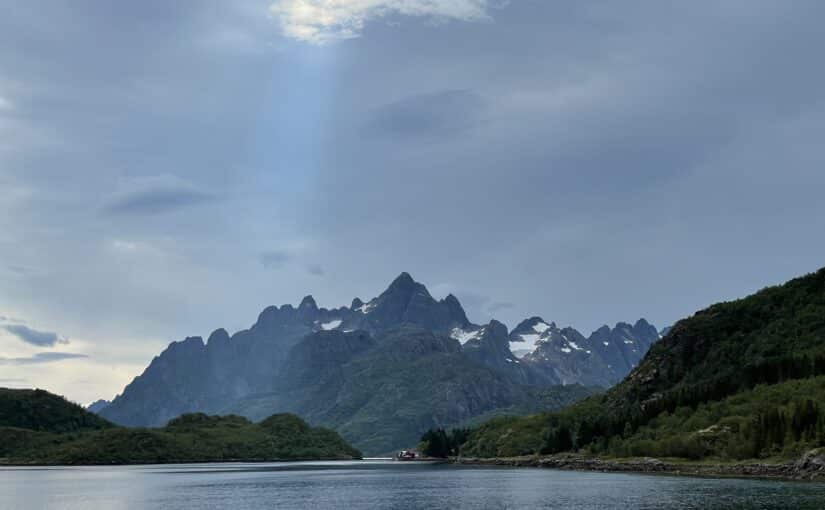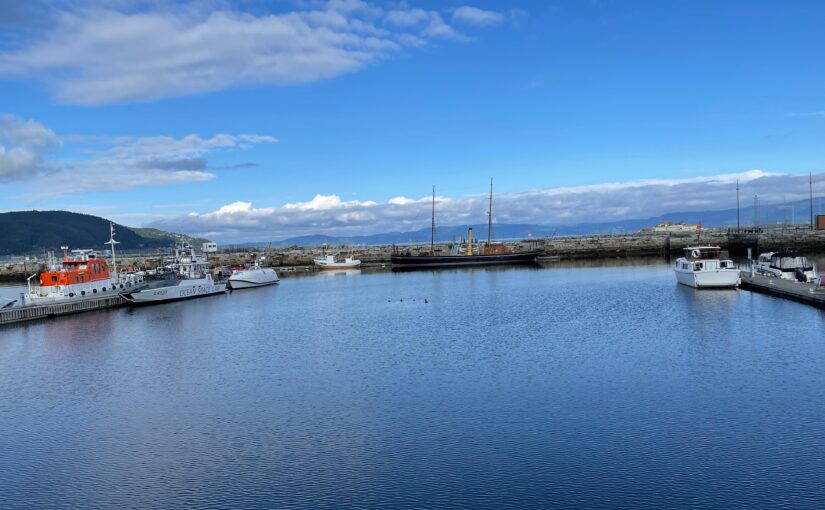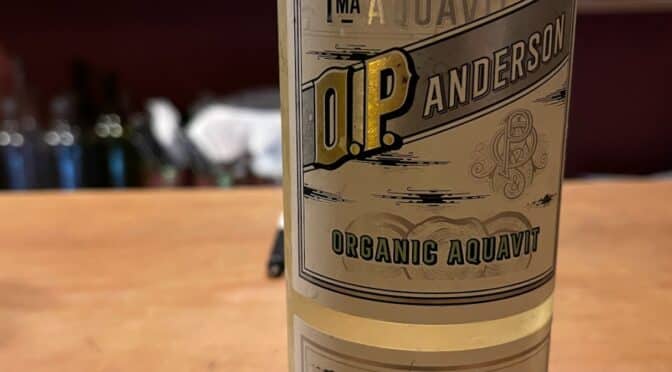Nick Taylor and Barbara Nevins Taylor
To describe the terrain along the fjords as rugged is like saying Taylor Swift can sing a little. Slabs of solid rock thrust up from the water with a muscular force the authors of Norwegian myth gave to Thor and Odin. And their crazy angles, drops and creases must have given rise to Loki, the trickster.
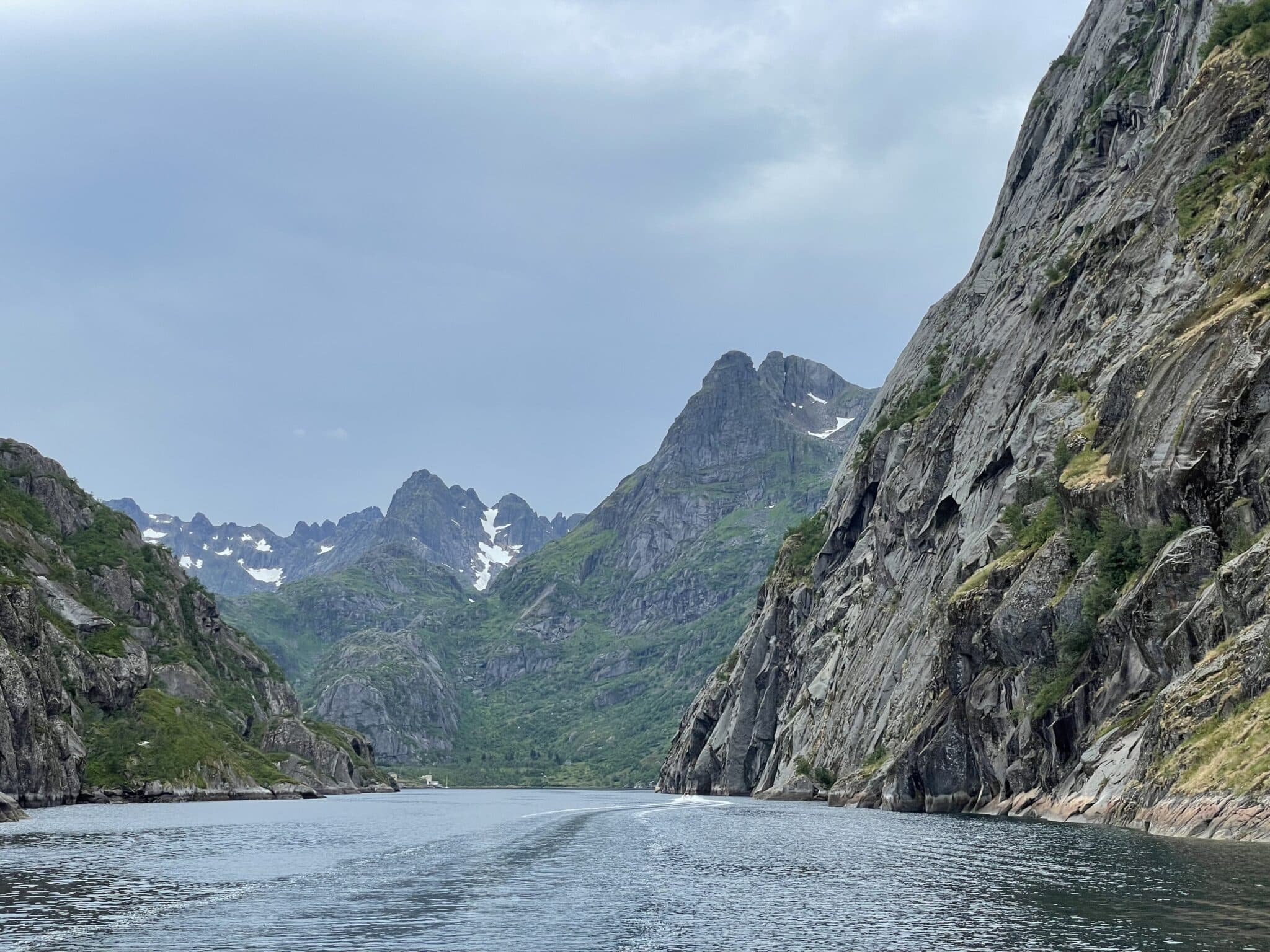
We got a close-up look at the fjords as we sailed aboard the Havila Castor, a cruise and small cargo ship making its way down the Norwegian coast from north to south. We joined the boat on July 30 in Kirkenes, a town 250 miles above the Arctic Circle and five miles from the Russian border near Murmansk, after flying there from Oslo on the 29th.
That gave us a little time to explore, and we found a taxi driver to take us to the border crossing.
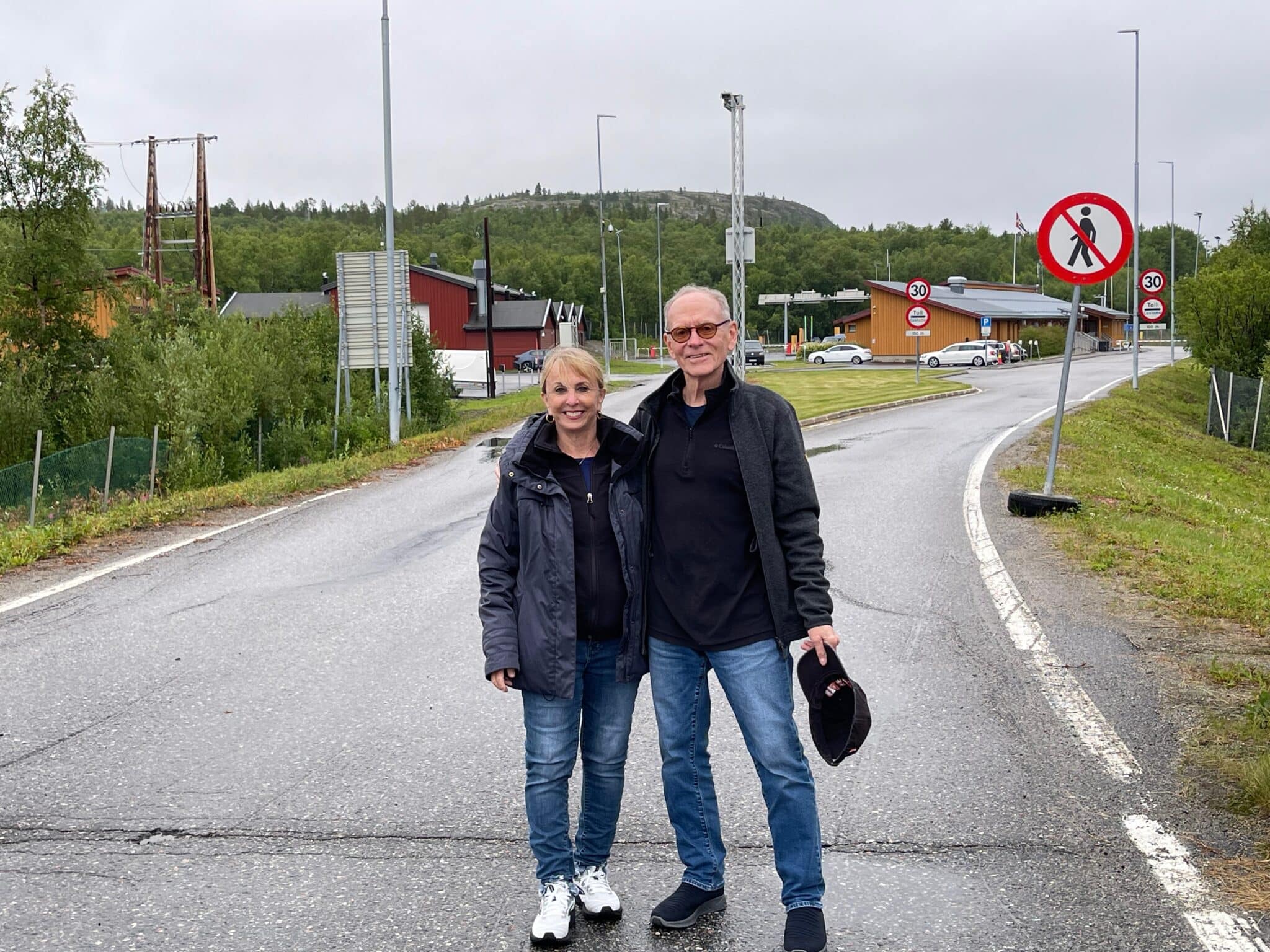
The signs suggested that we stay on the Norwegian side. Border crossings were frequent until Russia’s invasion of Ukraine slowed them to a trickle.
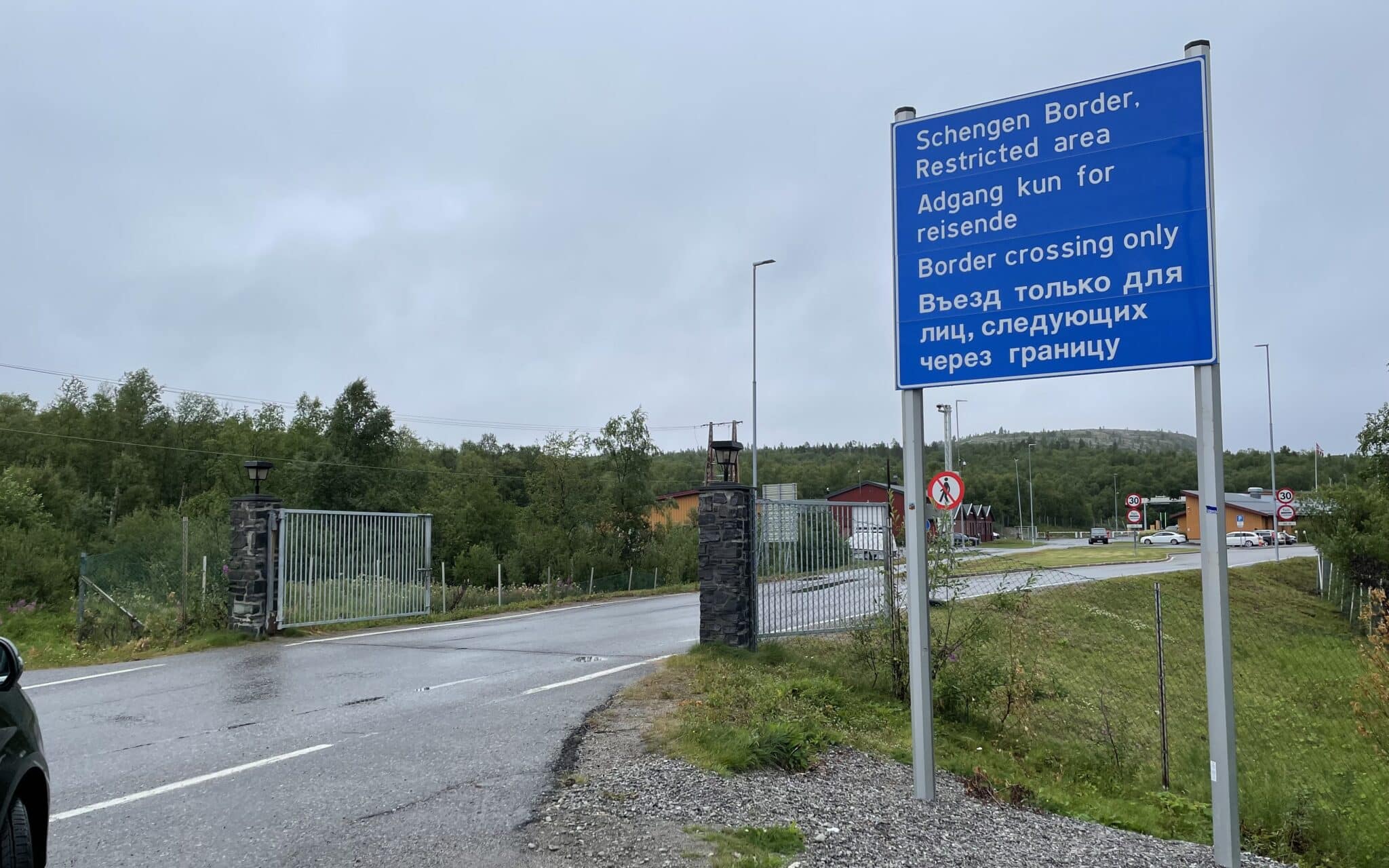
Nearby was a former crossing point, now closed. But the evidence of cross-border surveillance was everywhere on the hills above.
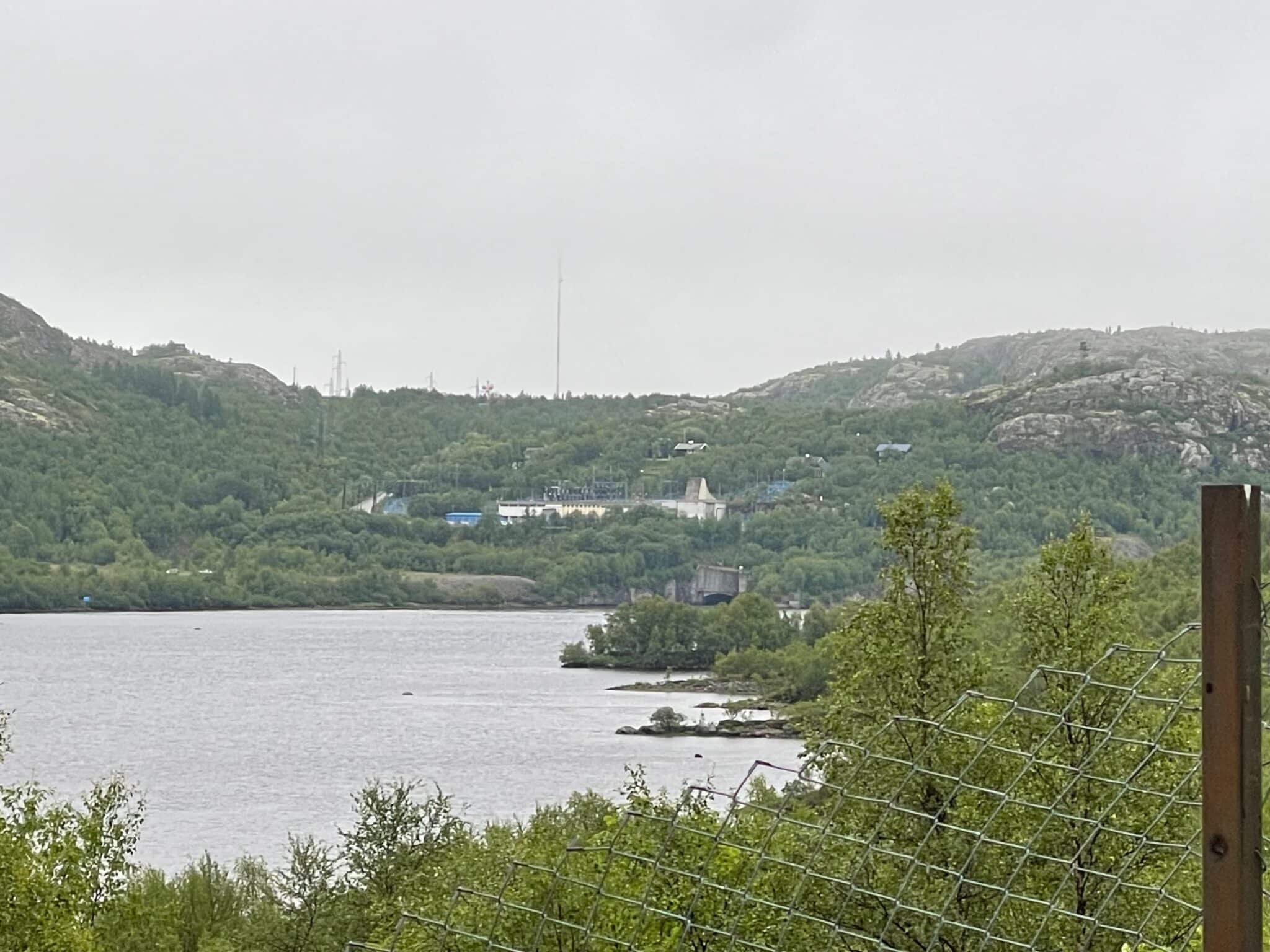
The driver told us Kirkenes has about 500 Russians among its 3,500 residents. There’s a Russian consulate there, but the most visible opinion we saw when we got back to town was this one.
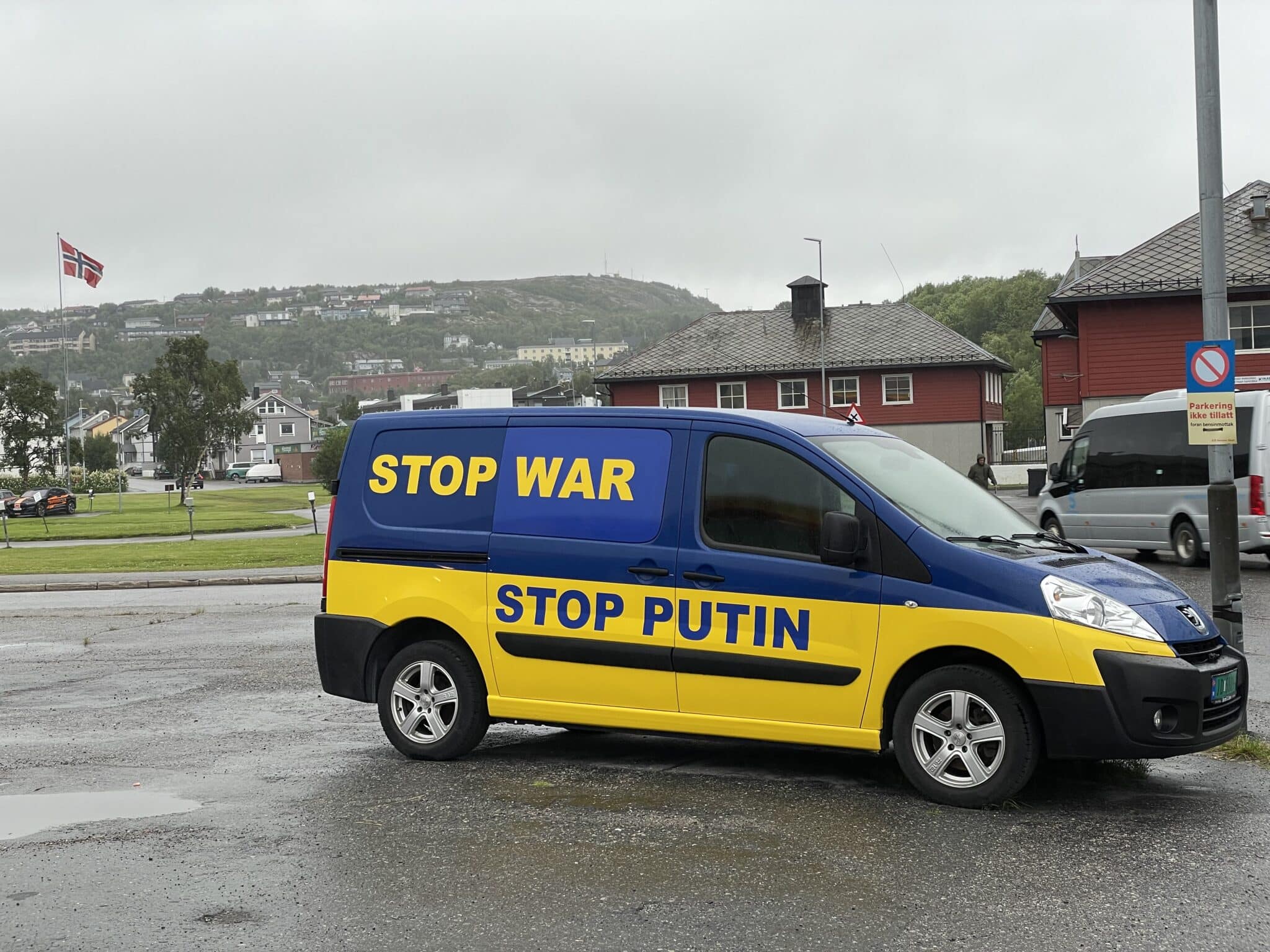
The Castor, built in 2022, wasn’t a huge cruise ship with non-stop entertainment. We understood it would make several stops a day, sometimes for just minutes to offload or take on cargo, sometimes long enough for the passengers to take in local color.
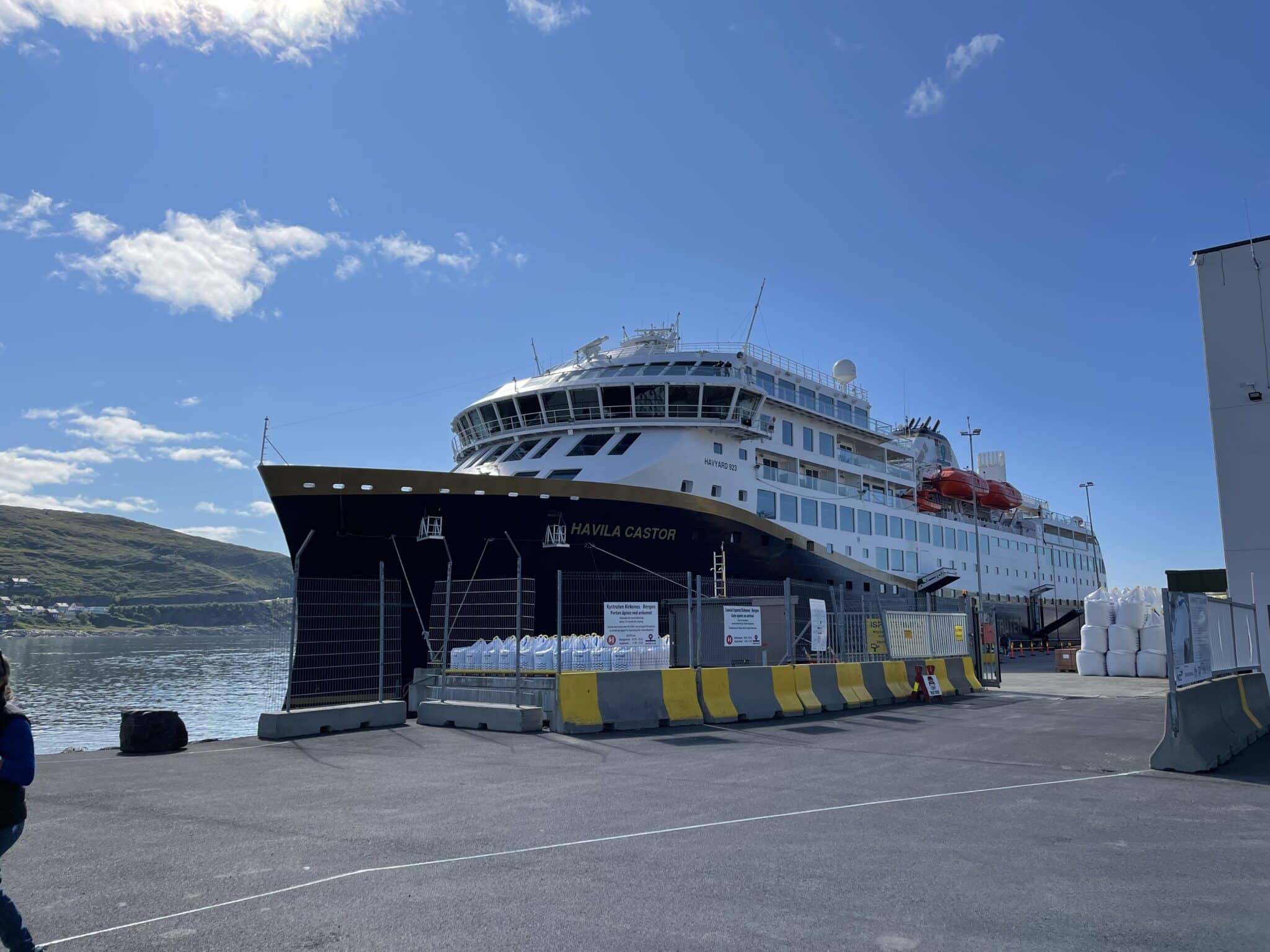
We had booked a cabin that we thought was just fine. But as the voyage began, we heard a message on the intercom. “There are suites available if you want to upgrade.” Why not go look? we thought. And then you know what happened. Barbara fell in love with the large cabin.
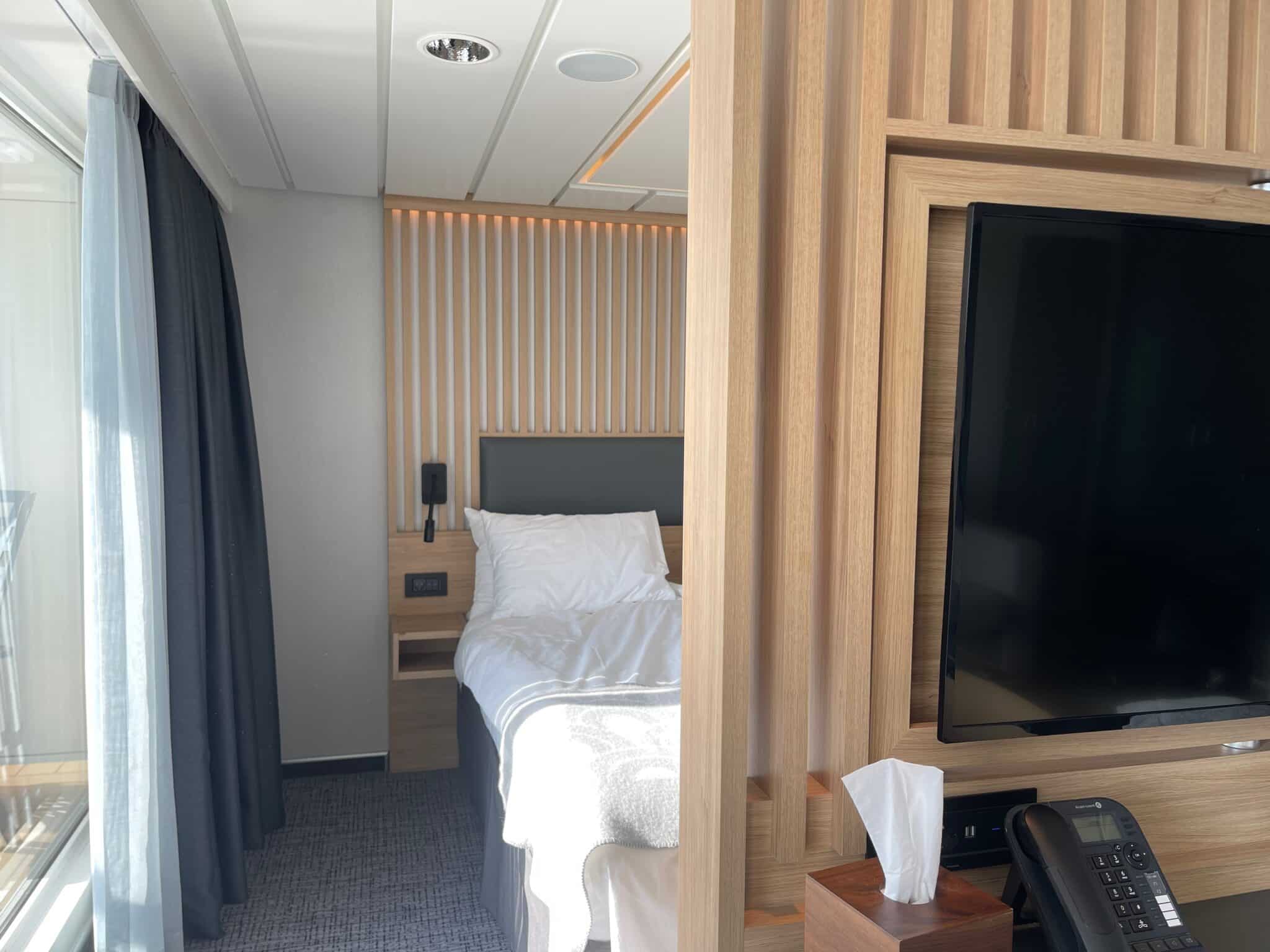
In the sitting area, you could slide a door open and step out on to a private deck.
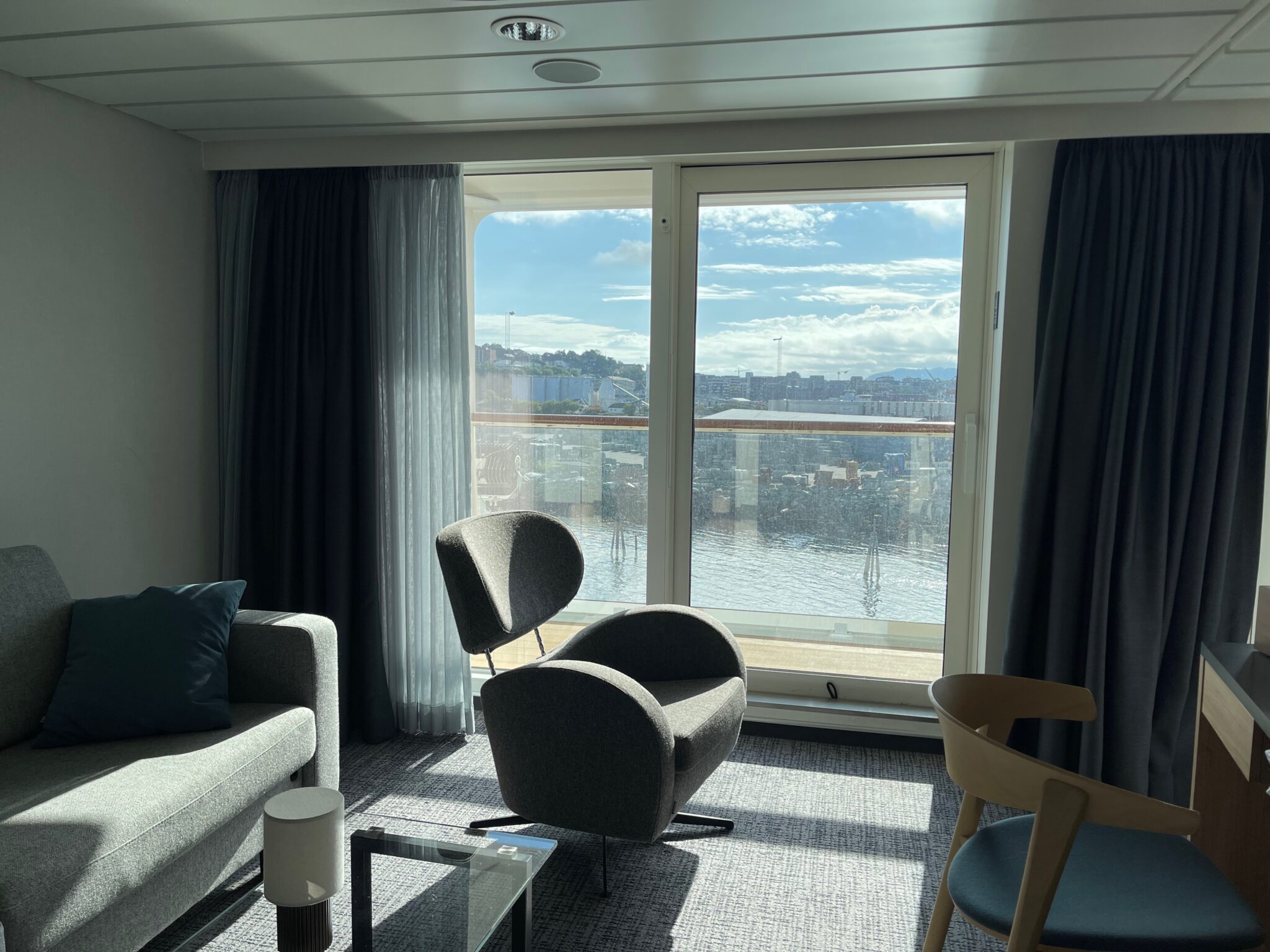
We debated this upgrade for a couple hours. Barbara, an early childhood fan of the late comic Jimmy Durante, remembered him singing, “How you gonna keep ’em down on the farm after they’ve seen Paree?” Now she was singing it. So we took the suite and it was perfect.
The ninety of us who boarded at Kirkenes joined 300 passengers who had started the cruise at its southern terminus, the town of Bergen. People and cargo loaded, we sailed out into the Barents Sea near the top of the world.
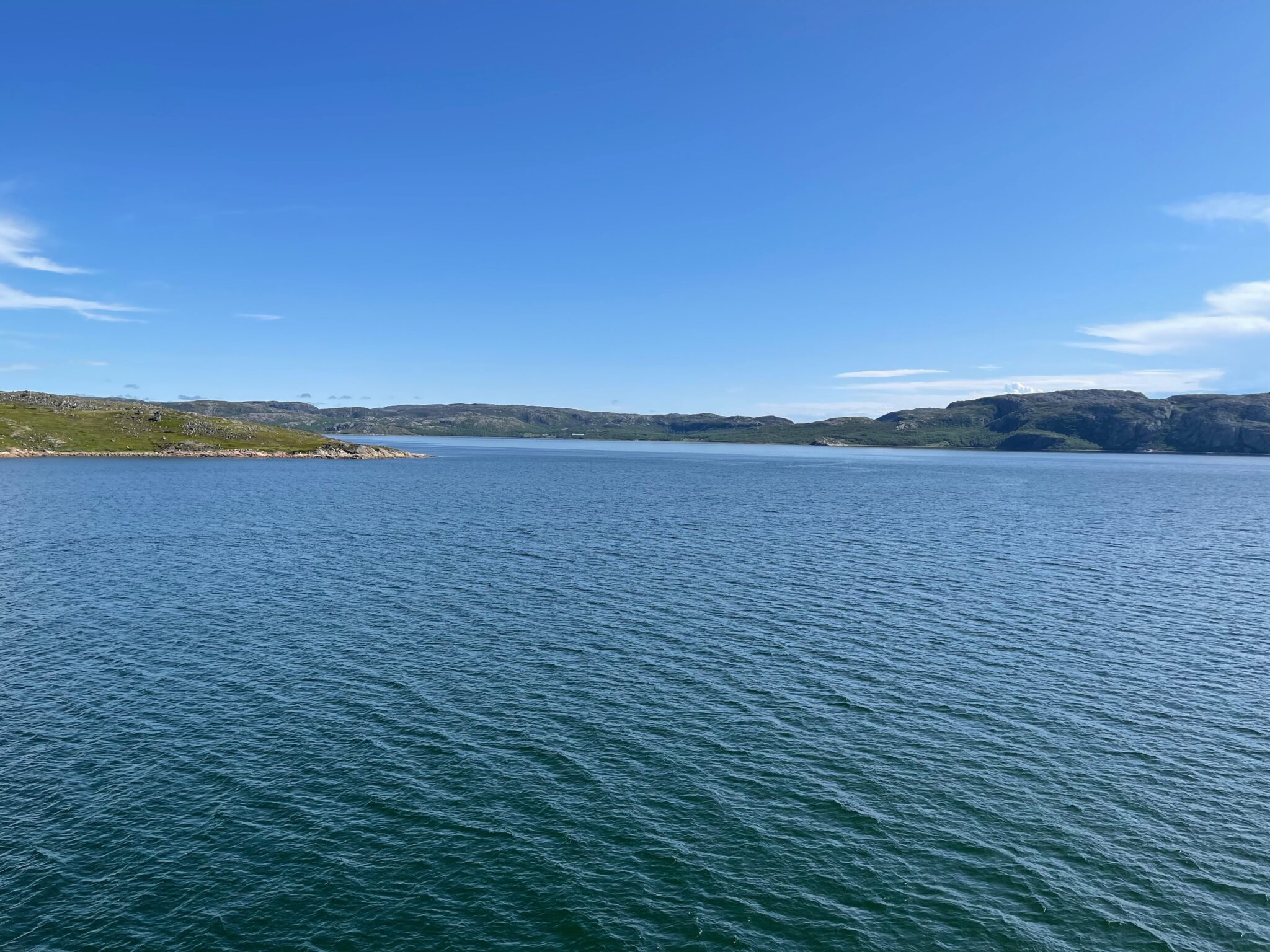
The on-board atmosphere was comfortable.
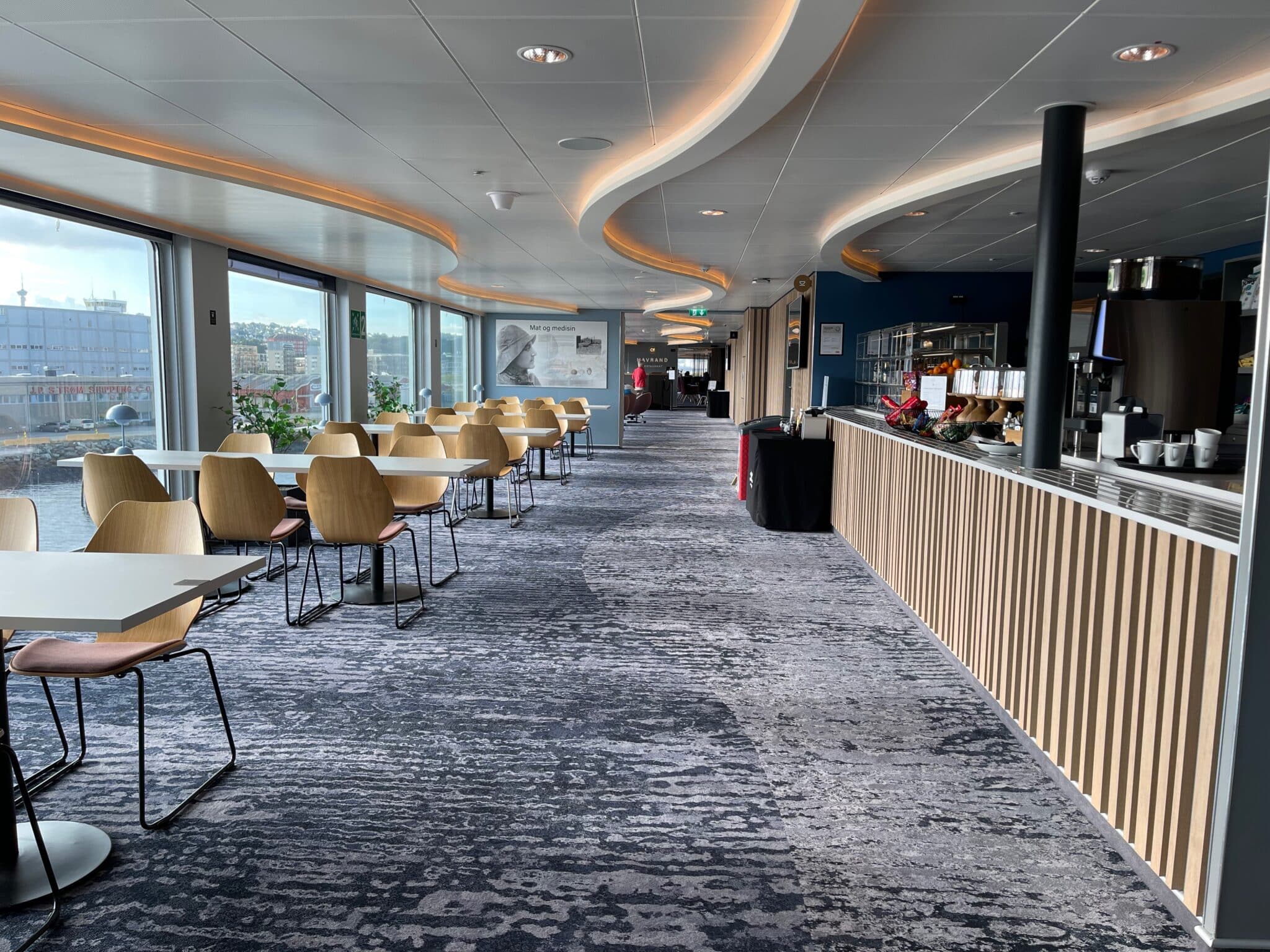
The first day we were assigned a table in the dining room with a couple from Bern, Switzerland, Claudia and Peter Brand. Claudia spoke English, but Peter’s smile did his talking.
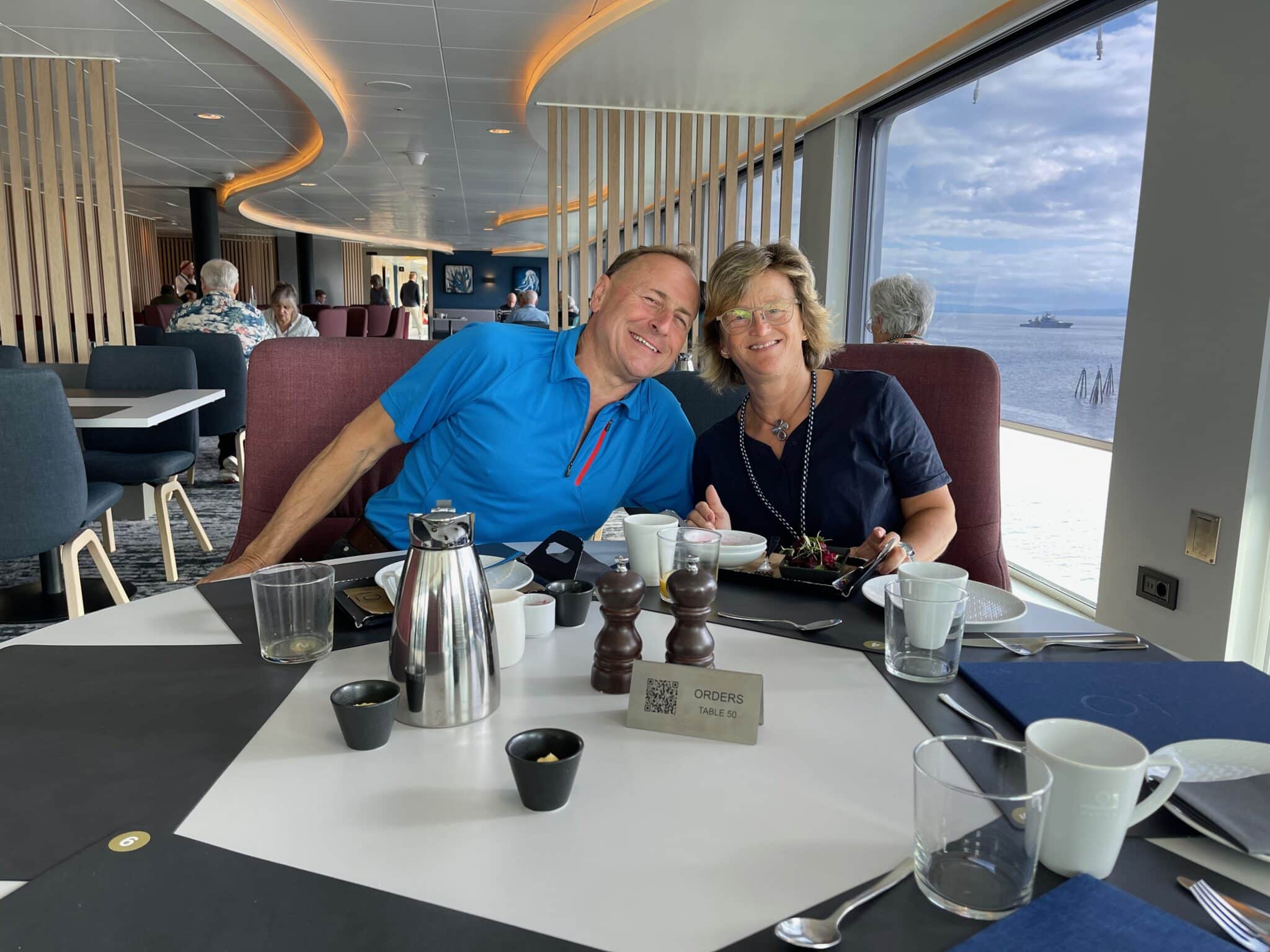
Streaming provided the new lingua franca. We managed to find common ground in the European series we stream on Netflix and through Amazon Prime like “Money, Murder, Zurich” and “Banking District.”
They had gotten on the boat that afternoon too after a train trip up through Finland. We were all ready to enjoy the fjords. Our route looped over Norway’s northern tip stopping at towns including Vardø, Båtsfjord, Berlevåg, Mehamn, Kjøllefjord, and Honningsvåg. In the afternoon when reached Vardø, fog hung over the town and the boats docked in the small harbor.
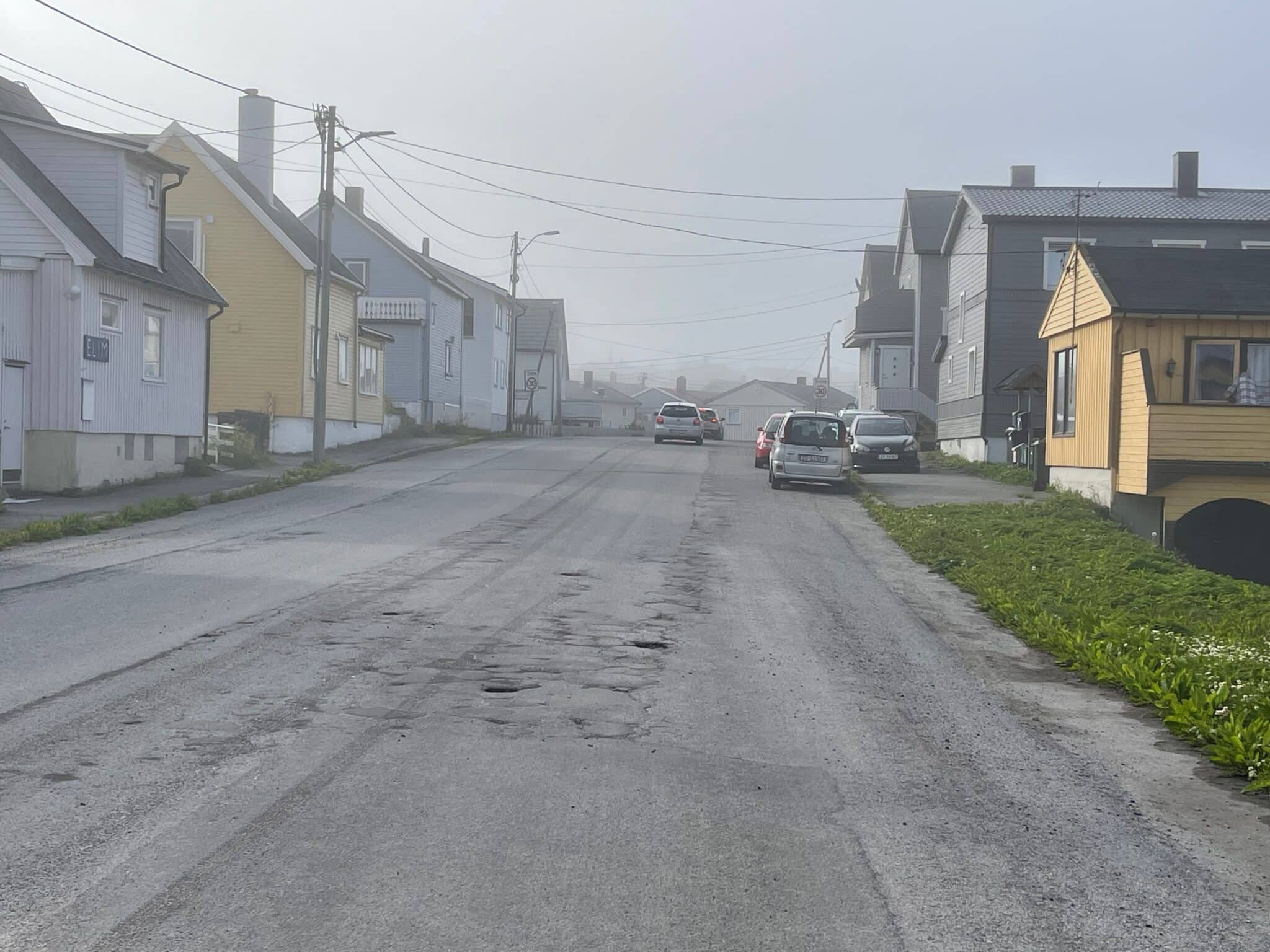
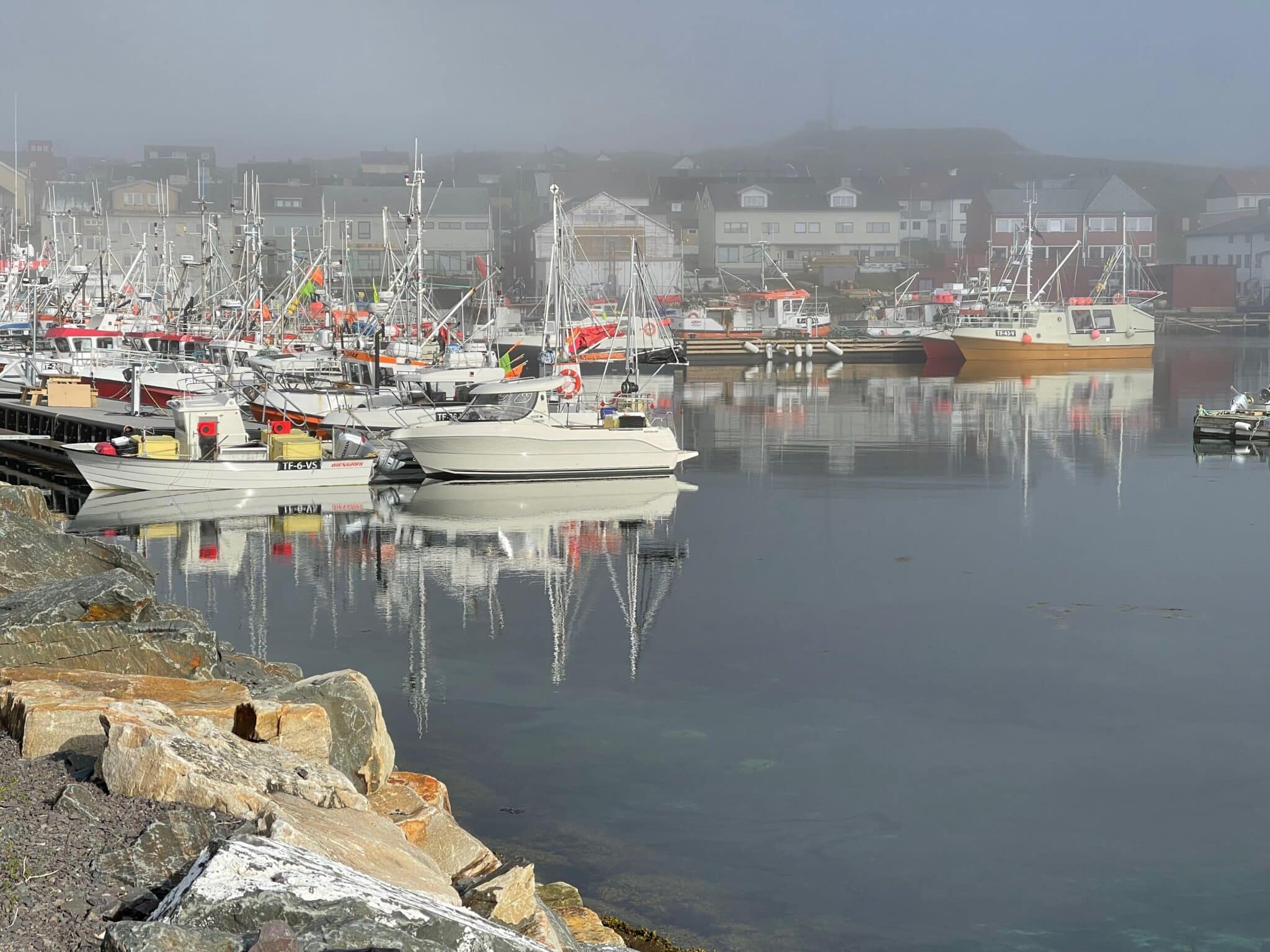
One thing stood out clearly. This image on a wall near the dock of Marlon Brando as the Godfather holding what we thought was a Vardø fish seemed out of place. But the translation of the words beside him told the story: “Salmon is important for Norway.”
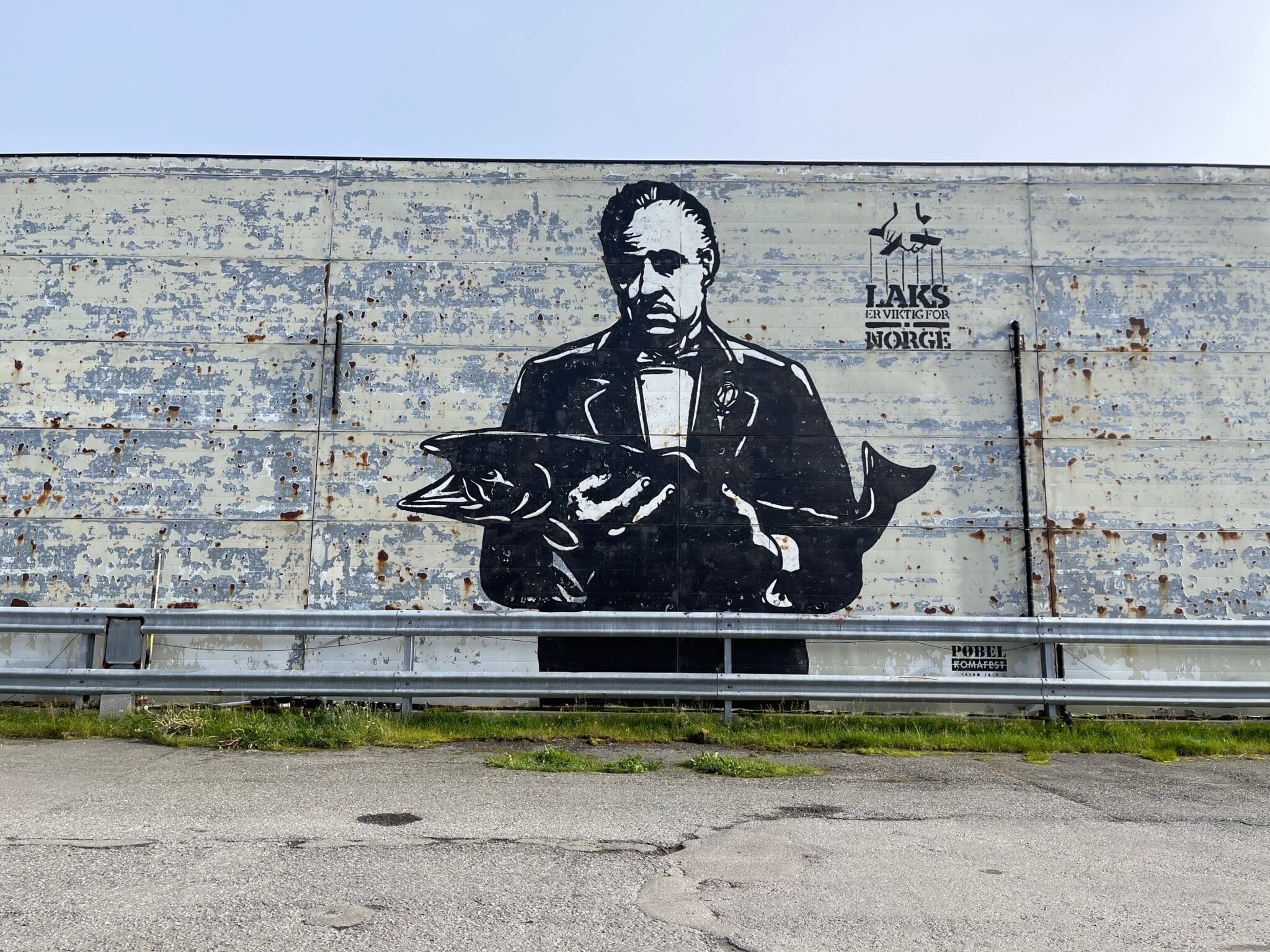
Just as we were about to leave the dock a rainbow struggled to make its way through the fog.
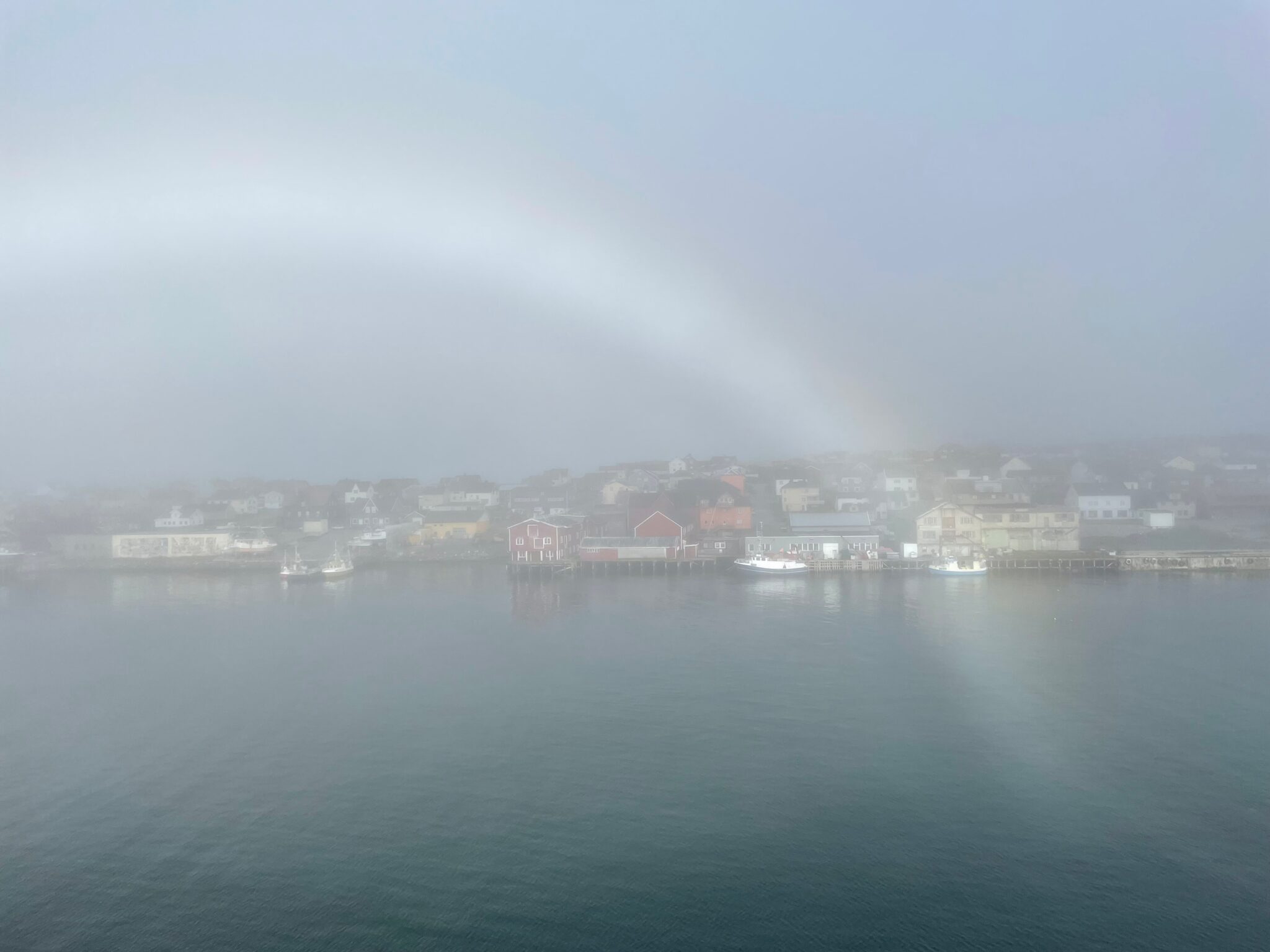
The fog hung over the Veranger Peninsula in the Barents Sea, but even at night the 24-hour daylight gave us a glimpse of the towns along the fjords. We took this photo at 10:29 p.m.
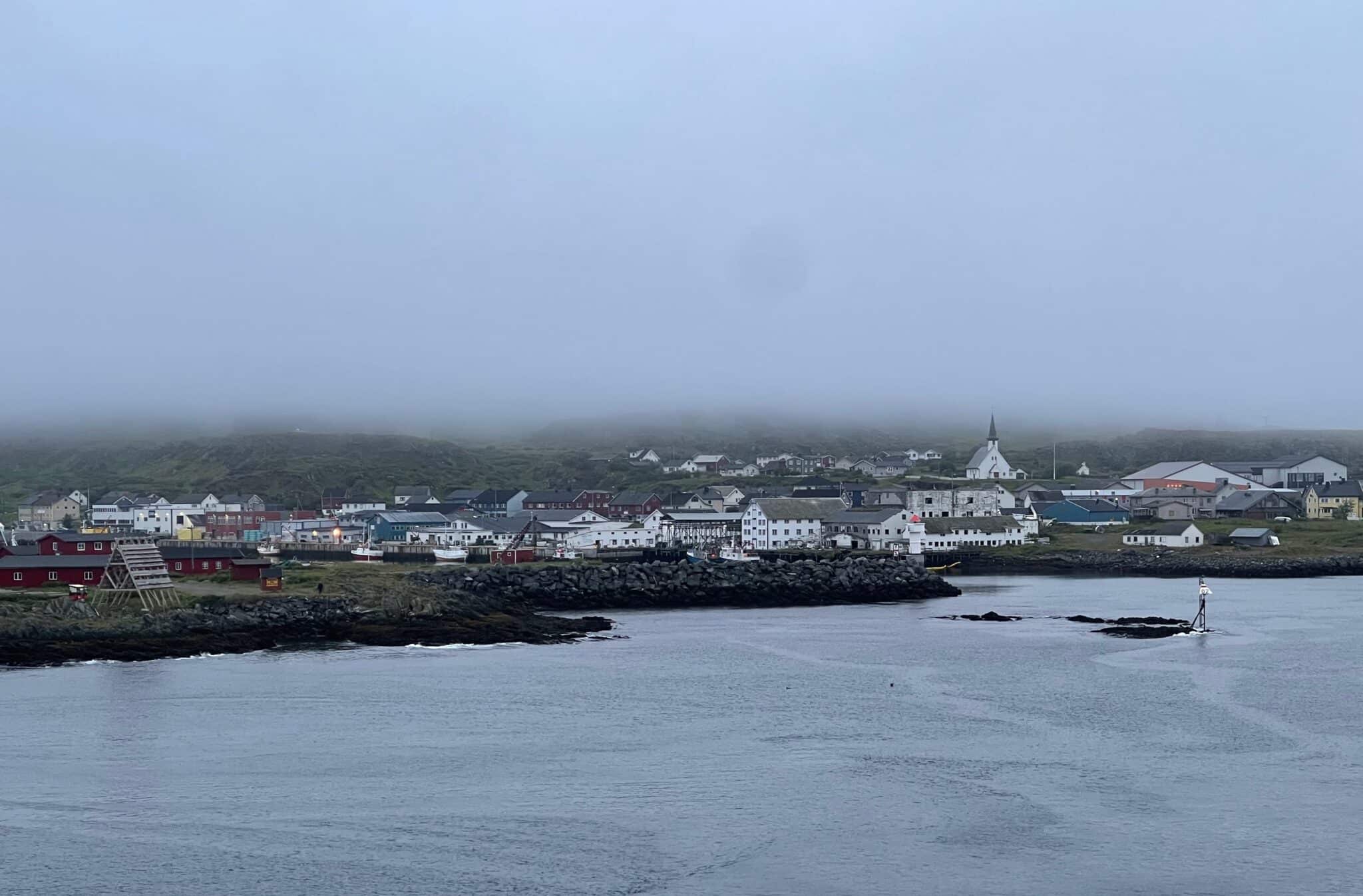
The next morning the sun broke through and a few of our tan-starved fellow passengers hit the decks shirtless or in near-bikinis.
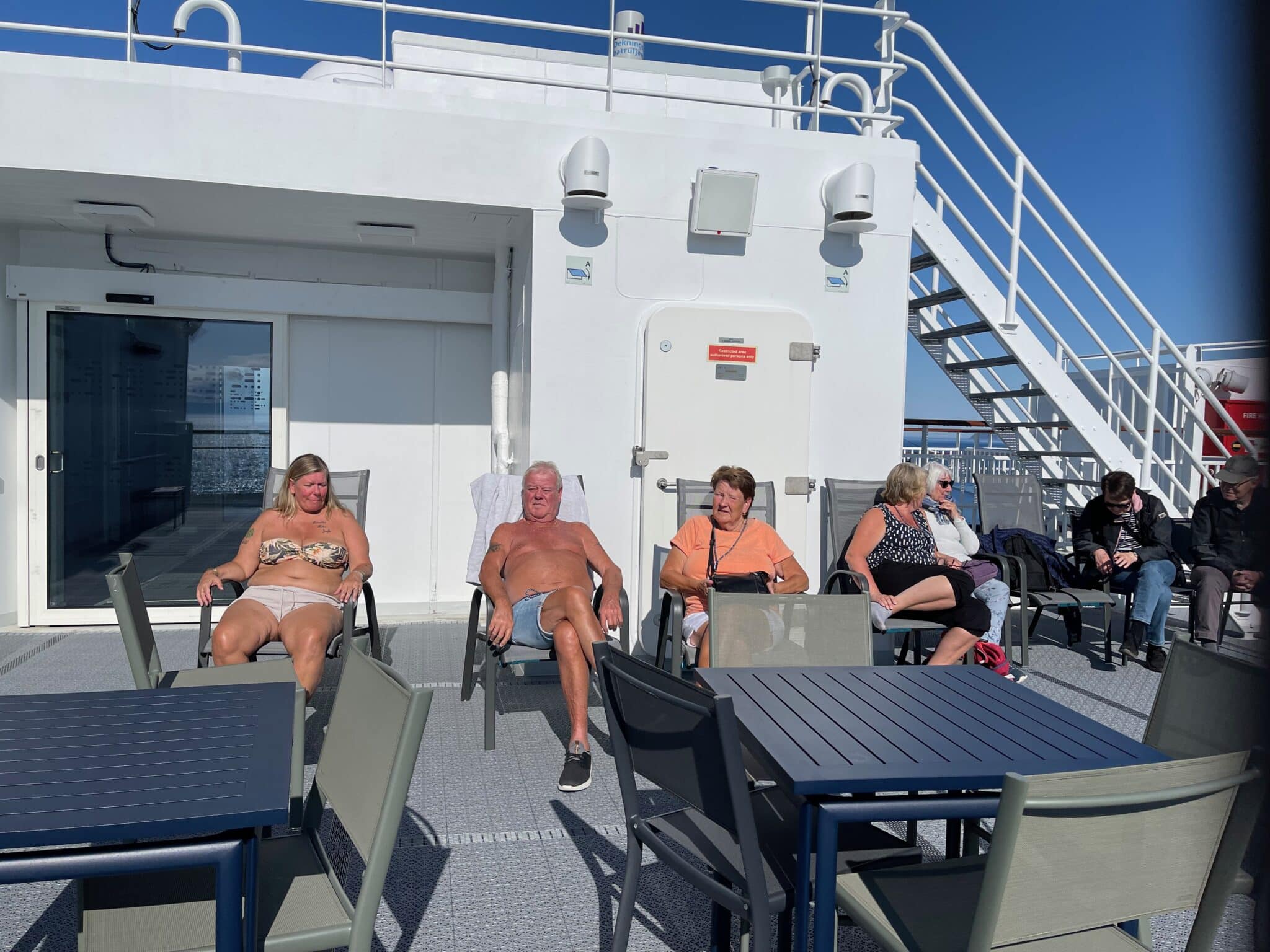
They were hardier than we were. We kept our puffer vests on.
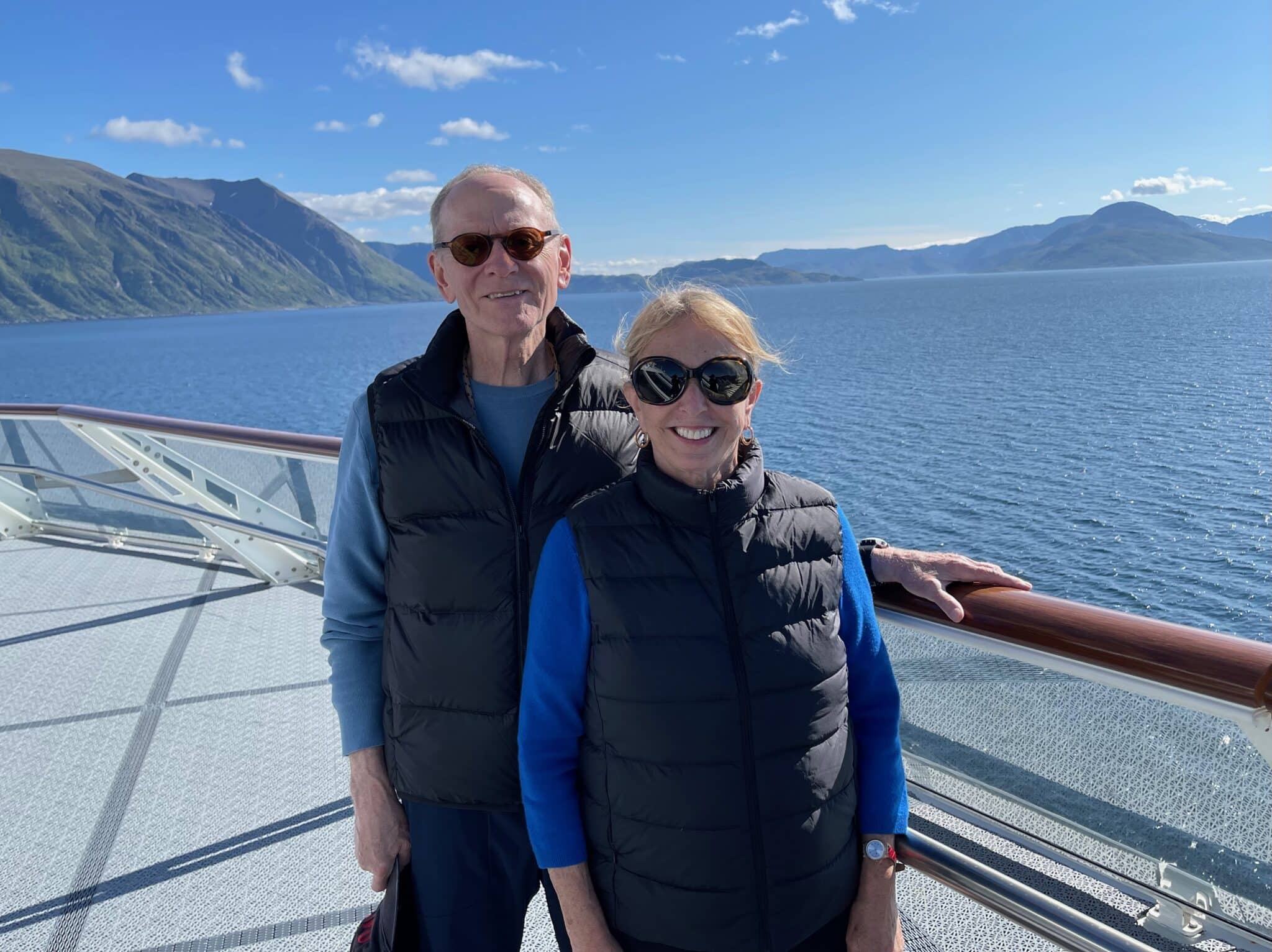
We docked at Hammerfest at eleven in the morning and stayed until almost one. Here you could tour the town or take an excursion to meet a sled dog. We chose to walk by ourselves and saw two reindeer with big antlers bobbing up and down, foraging like goats among the roadside weeds.
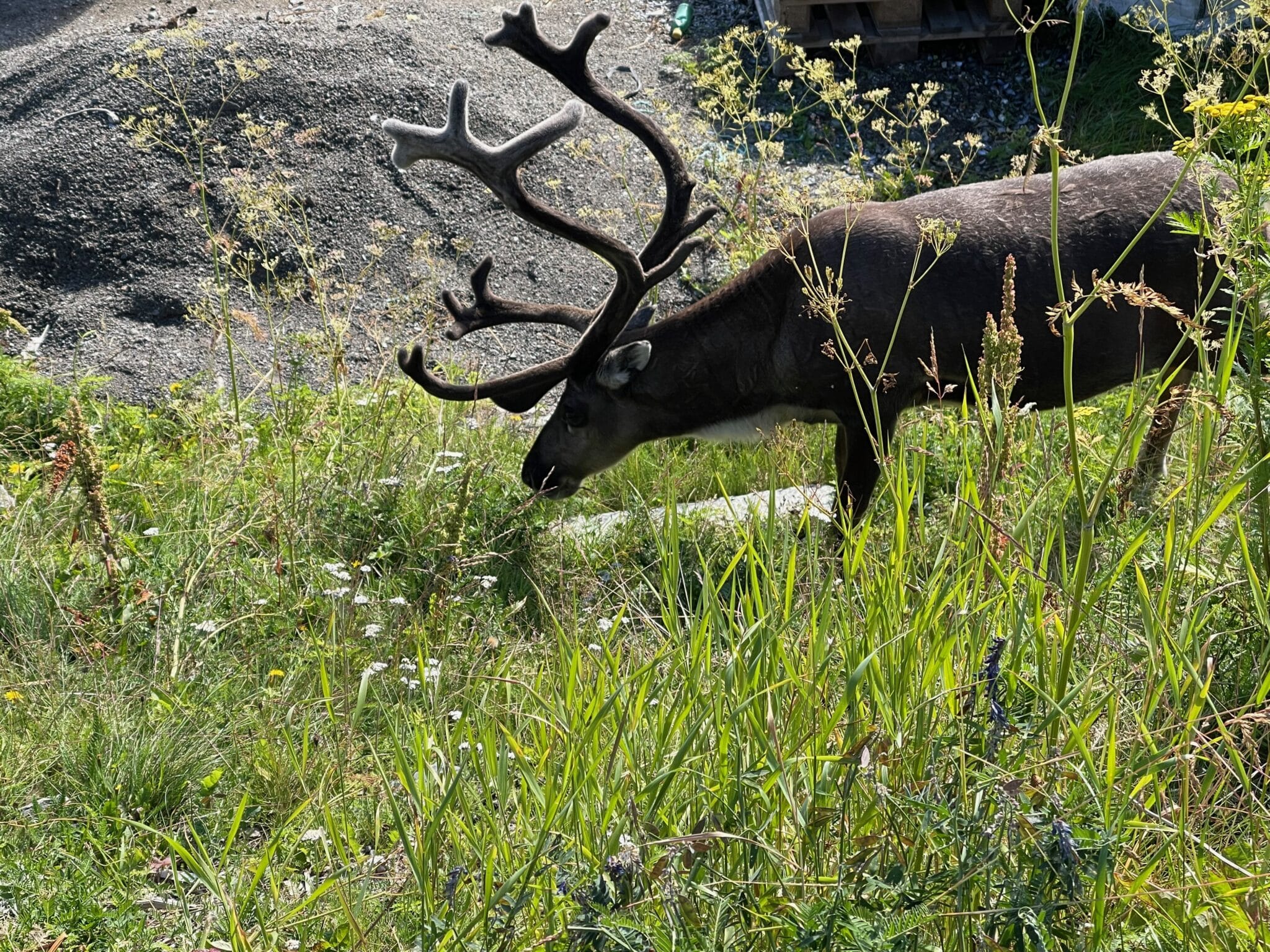
Back on board, the reindeer sightings seem to loosen everyone up and we continued to meet and enjoy the company of fellow travelers. Bjorn Tollefsrud, a retired telecom engineer from near Lillehammer, struck up a conversation with us as we sat on deck. His wife Beverly, a North Dakota native, taught history at a college in Minnesota before they married. They were as curious about the world as we are.
Later that day we met Marilyn Simmins from Connecticut and Kathleen Kelly, from Oklahoma, sisters-in-law who travel together regularly.
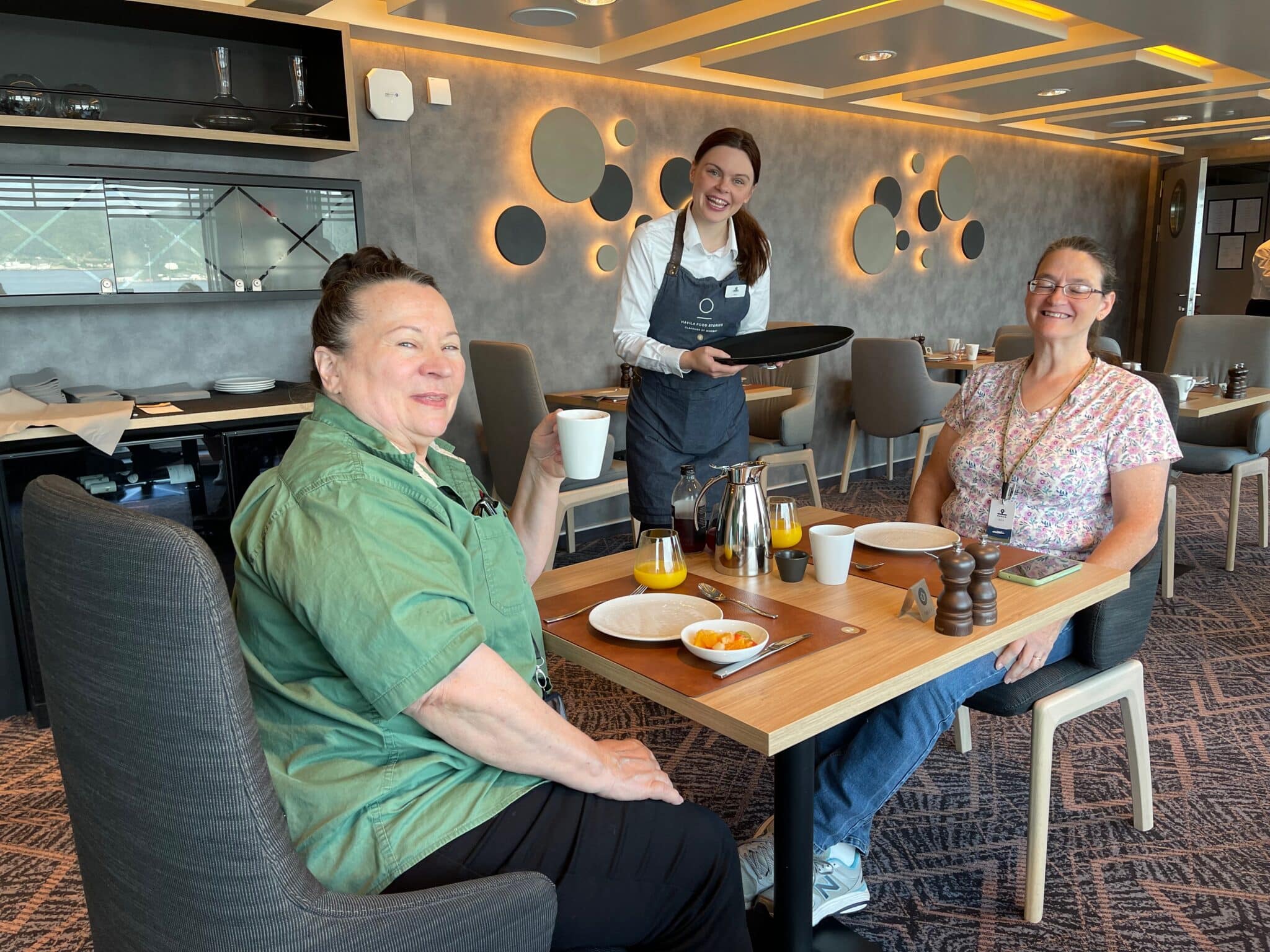
They had begun in Bergen and were doing the twelve-day round trip. Kathleen shared tips about life on the boat and invited us to join them and a British couple for free Prosecco at the cocktail hour. “You’ll love José the bartender,” she said. She was right, but we enjoyed her savvy company more. Although we were on the ship for a short time, it was a little like summer camp.
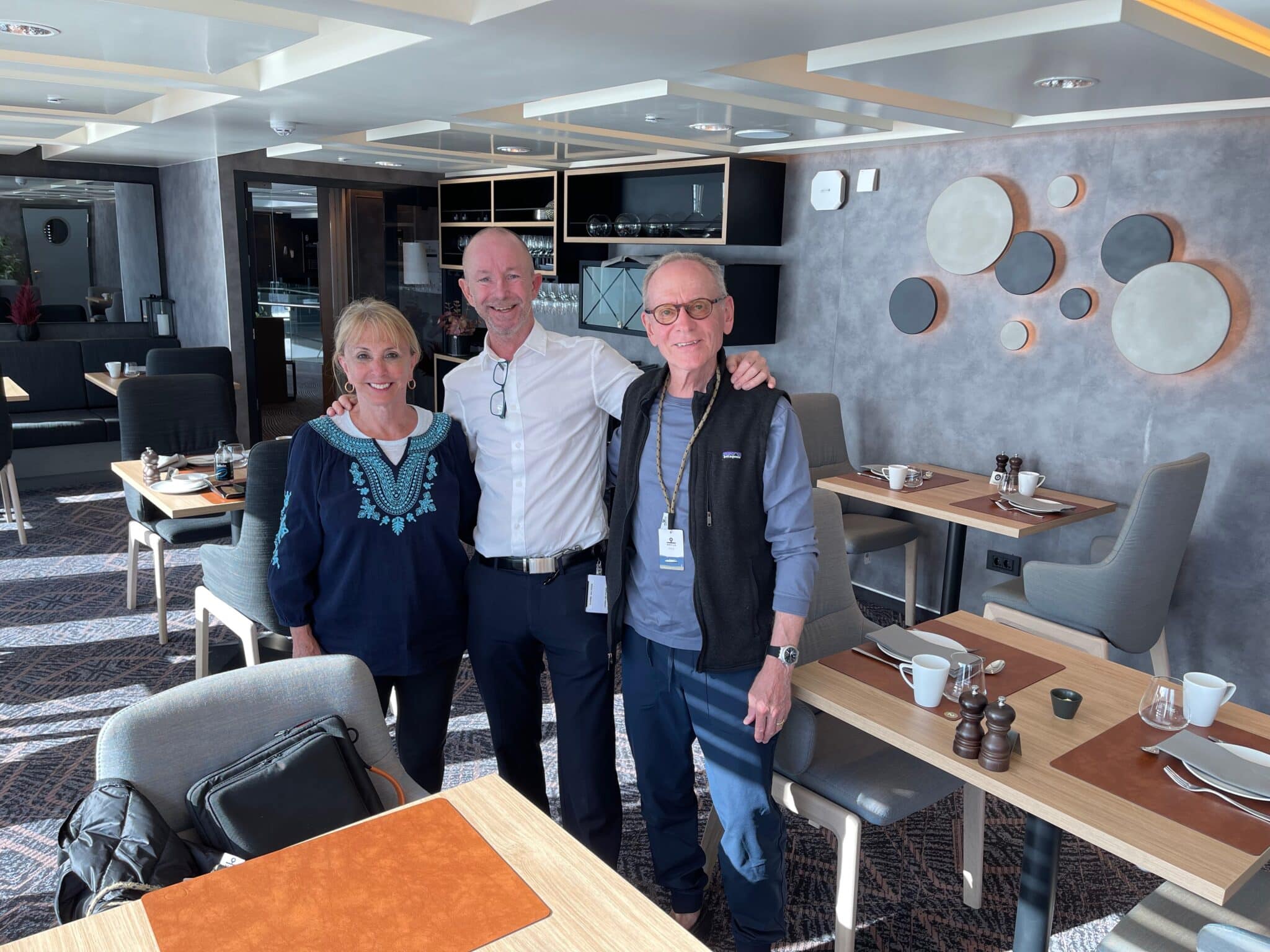
The Castor’s food was excellent, with an emphasis on new Nordic cooking featuring local ingredients. Reindeer, duck, fish, herring, smoked salmon and fish stew were regular menu items. The main dining room served small plates in several courses on tiny plates that some described unhappily as doll-sized. The fine dining room, for which you paid more, offered multiple courses with generous portions. We split our time between the two.
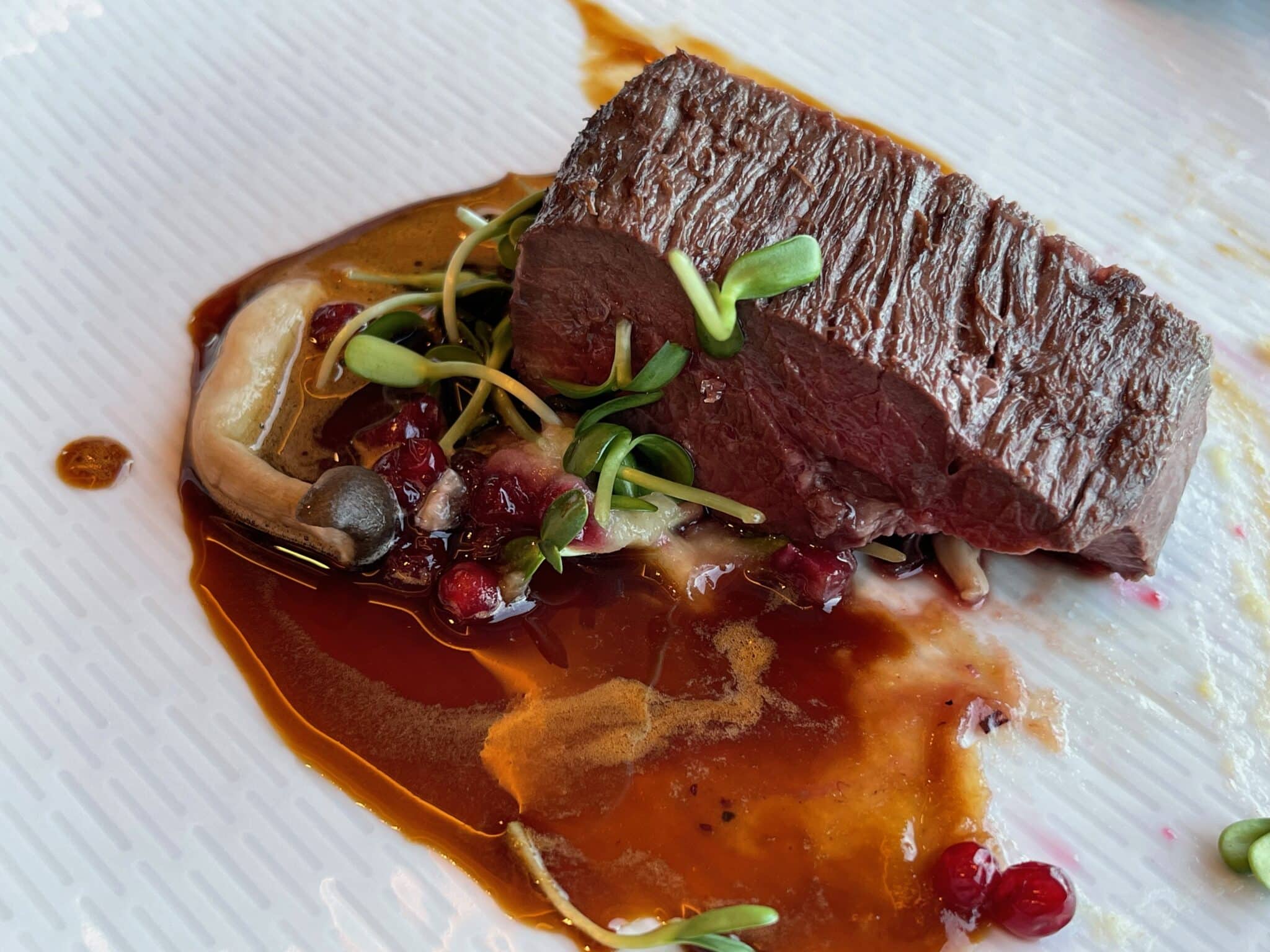
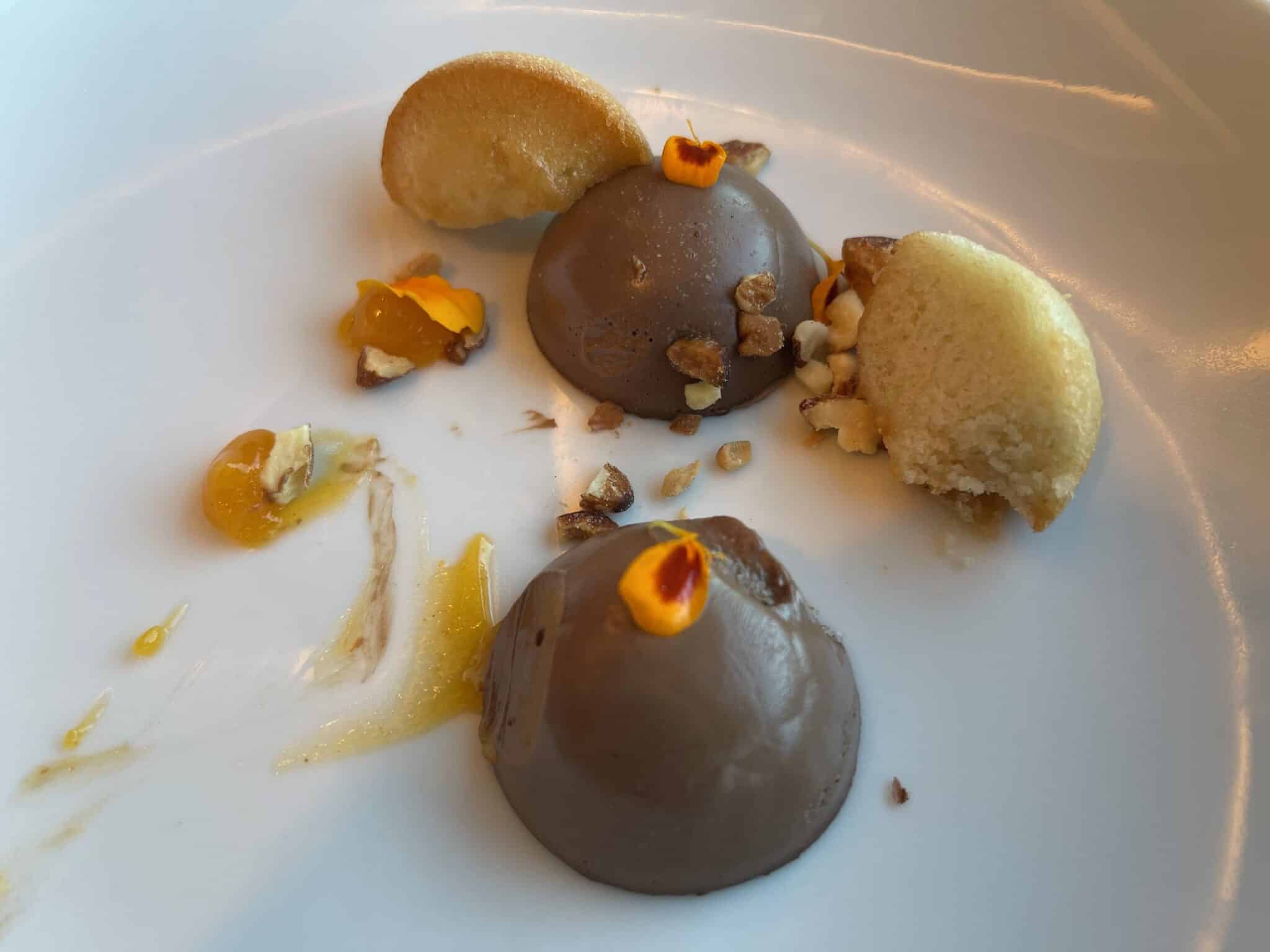
But the highlight of every day and evening was the scenery.
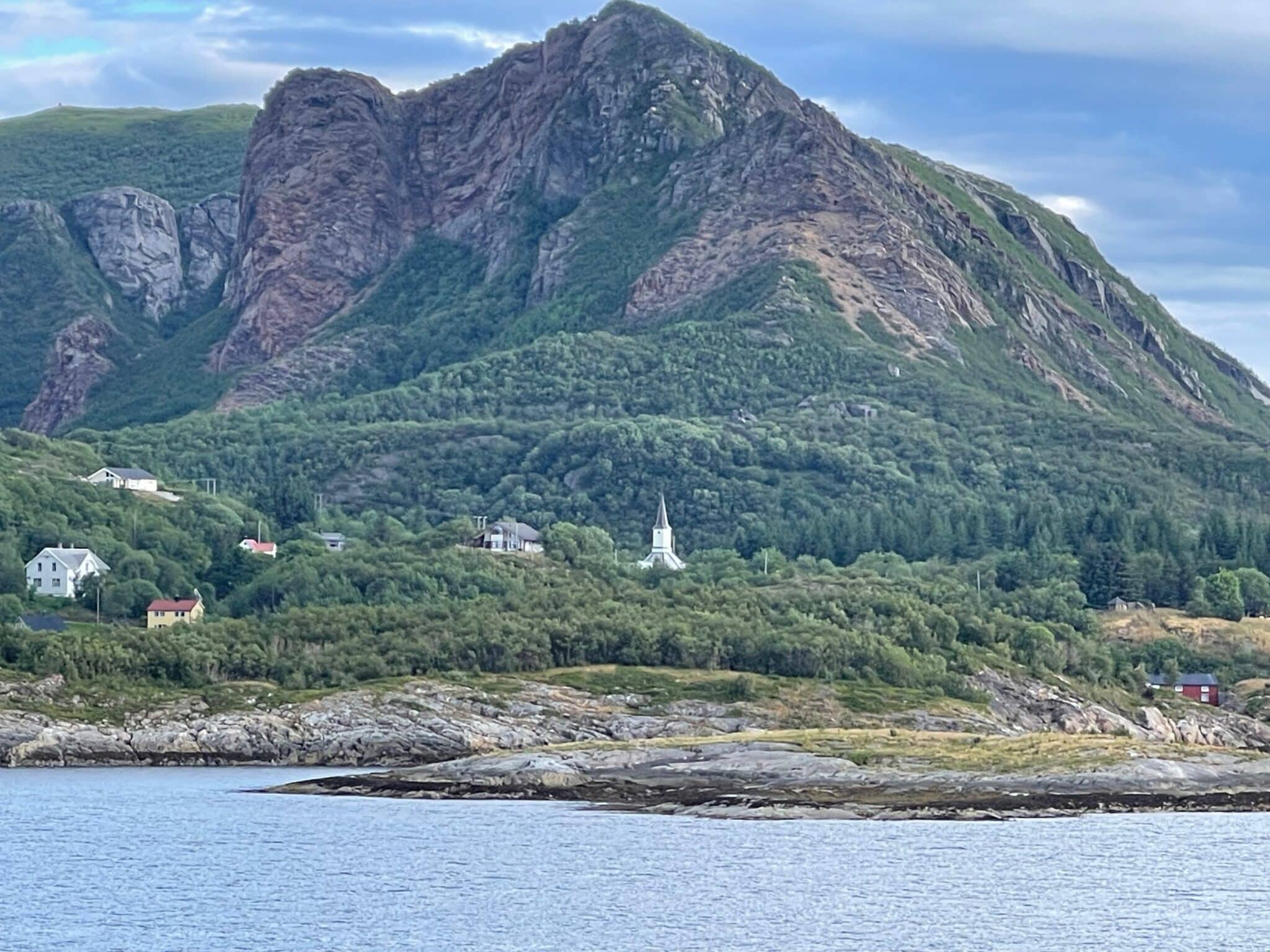
And the way the light changed and reflected on the sea.
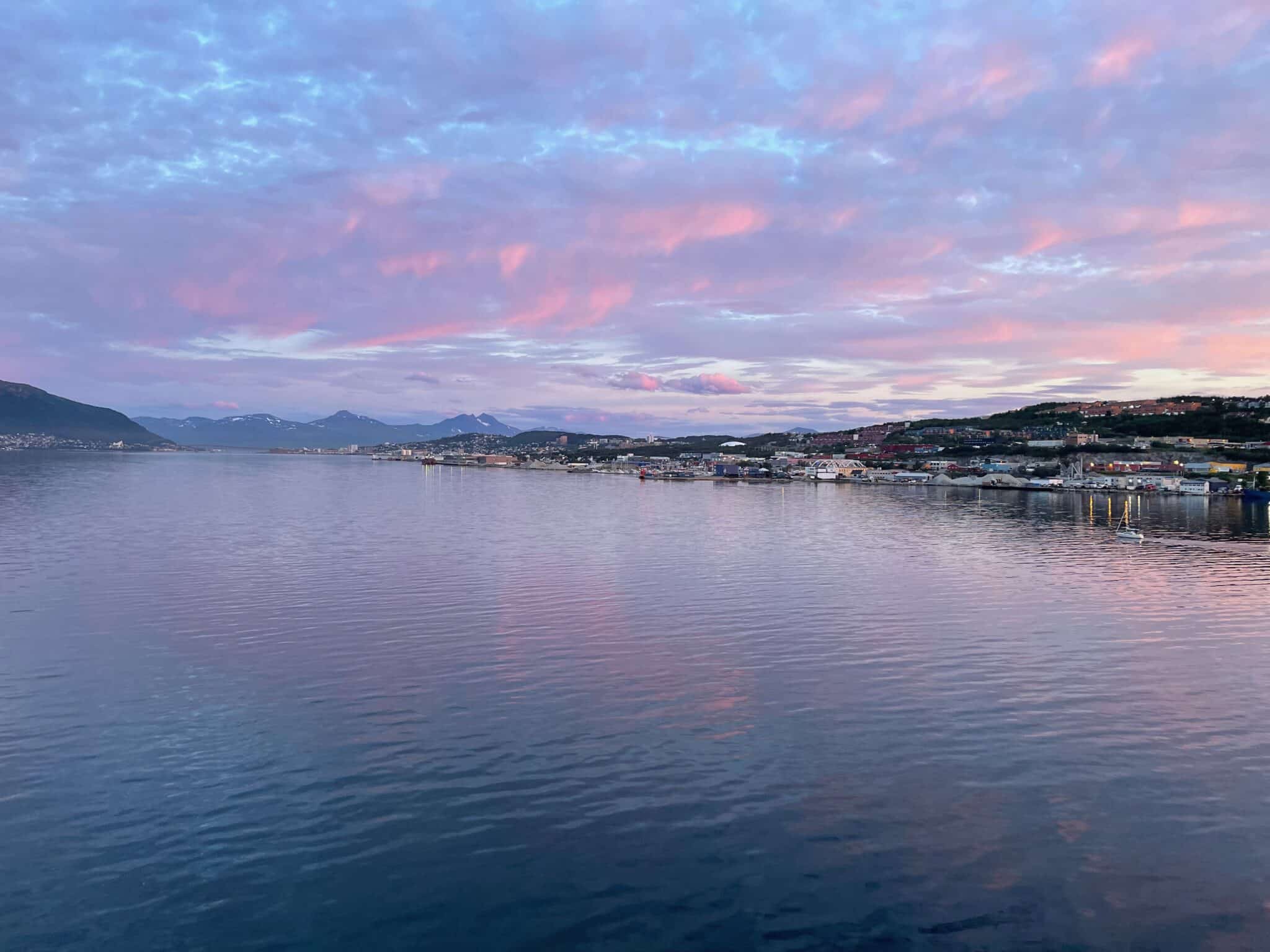
When the ship docked in Trømsø some 220 miles above the Arctic Circle we were truly in the Land of the Midnight Sun, and the sun and the sky played tricks with colors. We headed for a midnight concert at a beautiful 19th century wooden church in the town center.
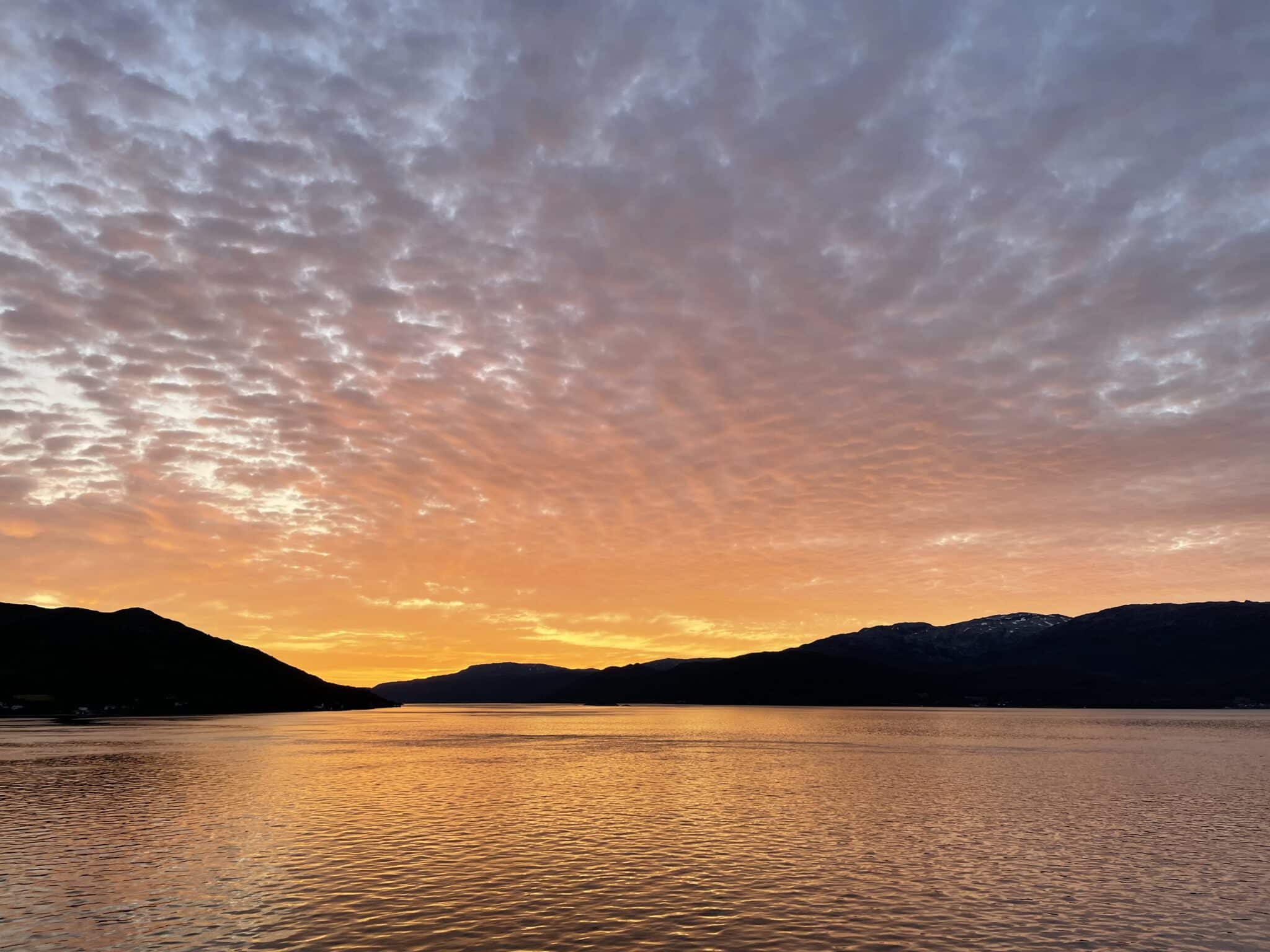
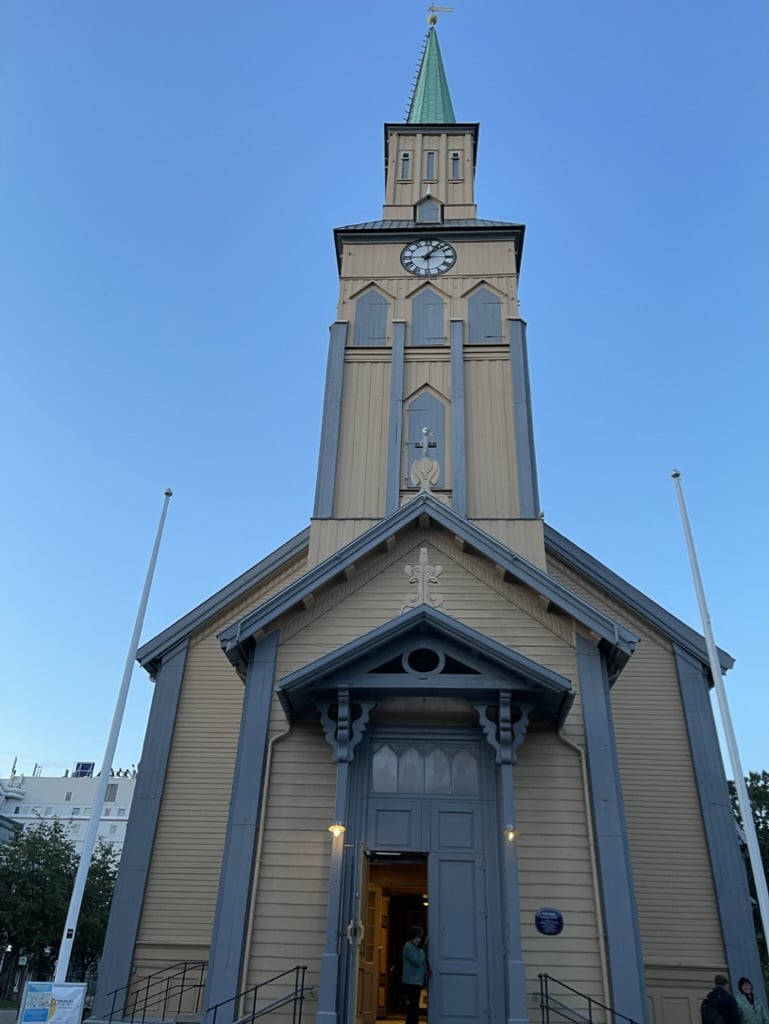
Three musicians greeted us and then took their positions in the nave. The organist began and then the cellist and then from a balcony, a soprano with a rich, passionate voice joined in. The program of classics largely by Norwegian composers, the hour and the persistent light outside added to the romance of the trip.
The Castor sailed as we slept and the next morning it made four stops on the way to Svolvaer.
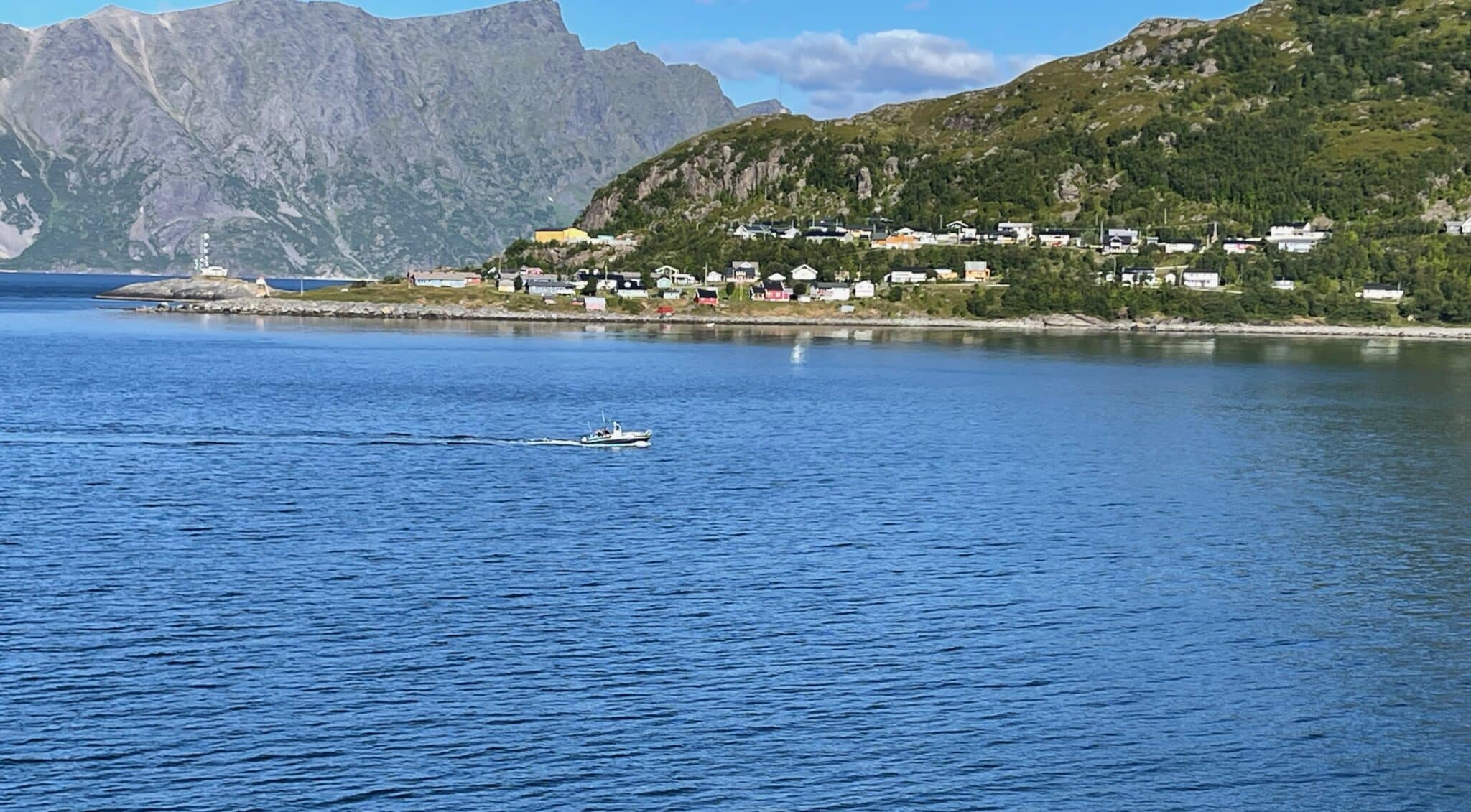
Longer stops gave passengers an opportunity to stroll around or go on planned excursions. Trips ashore help the economies of the small fjord towns with their tourist-friendly shops near the waterfront.
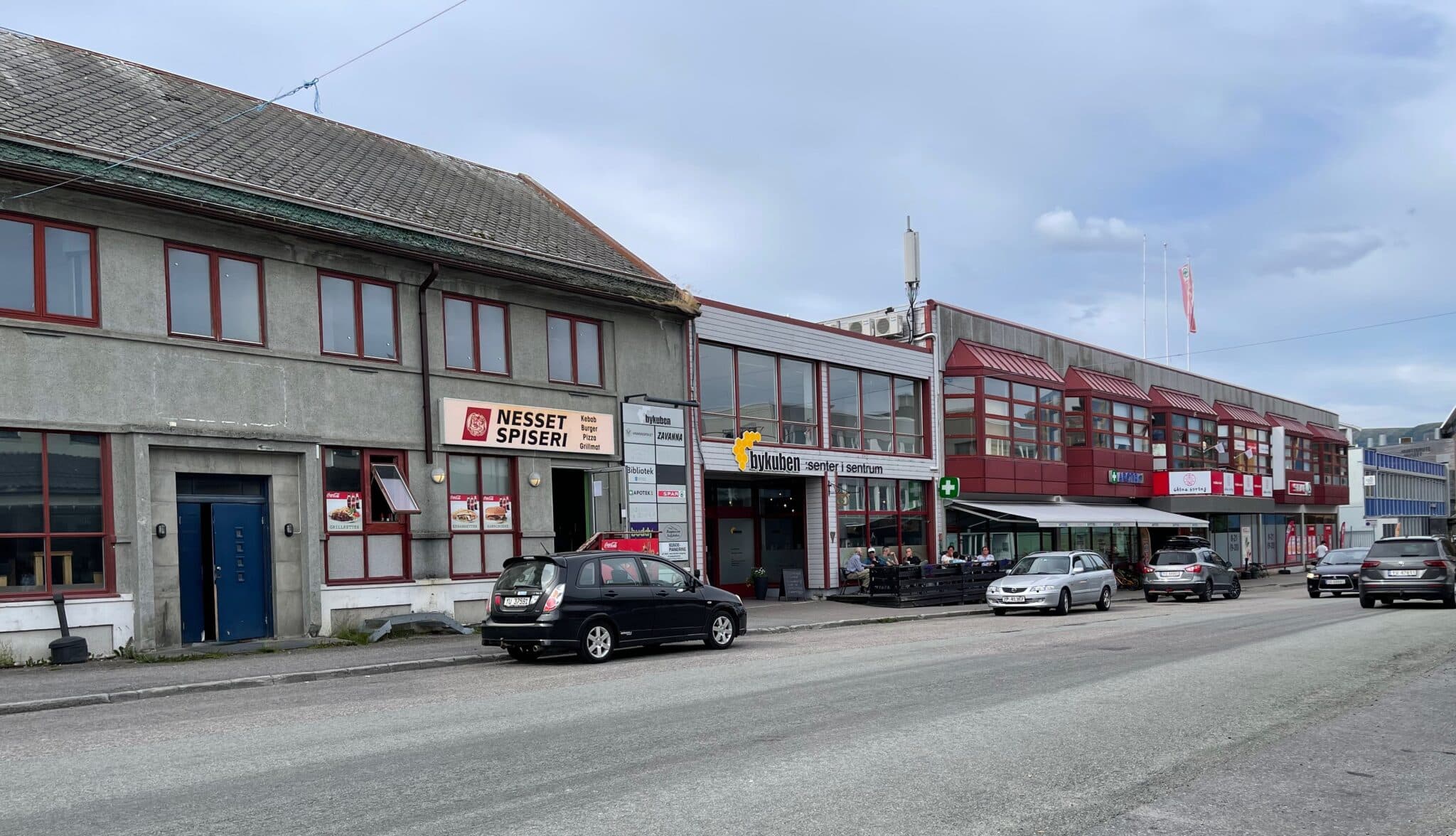
The Castor is one of four ships that ply the fjords hauling sightseeing passengers and making deliveries. Havila has one other, and its competitor, Hurtigruten, also has two, all sailing back and forth between Bergen and Kirkenes.
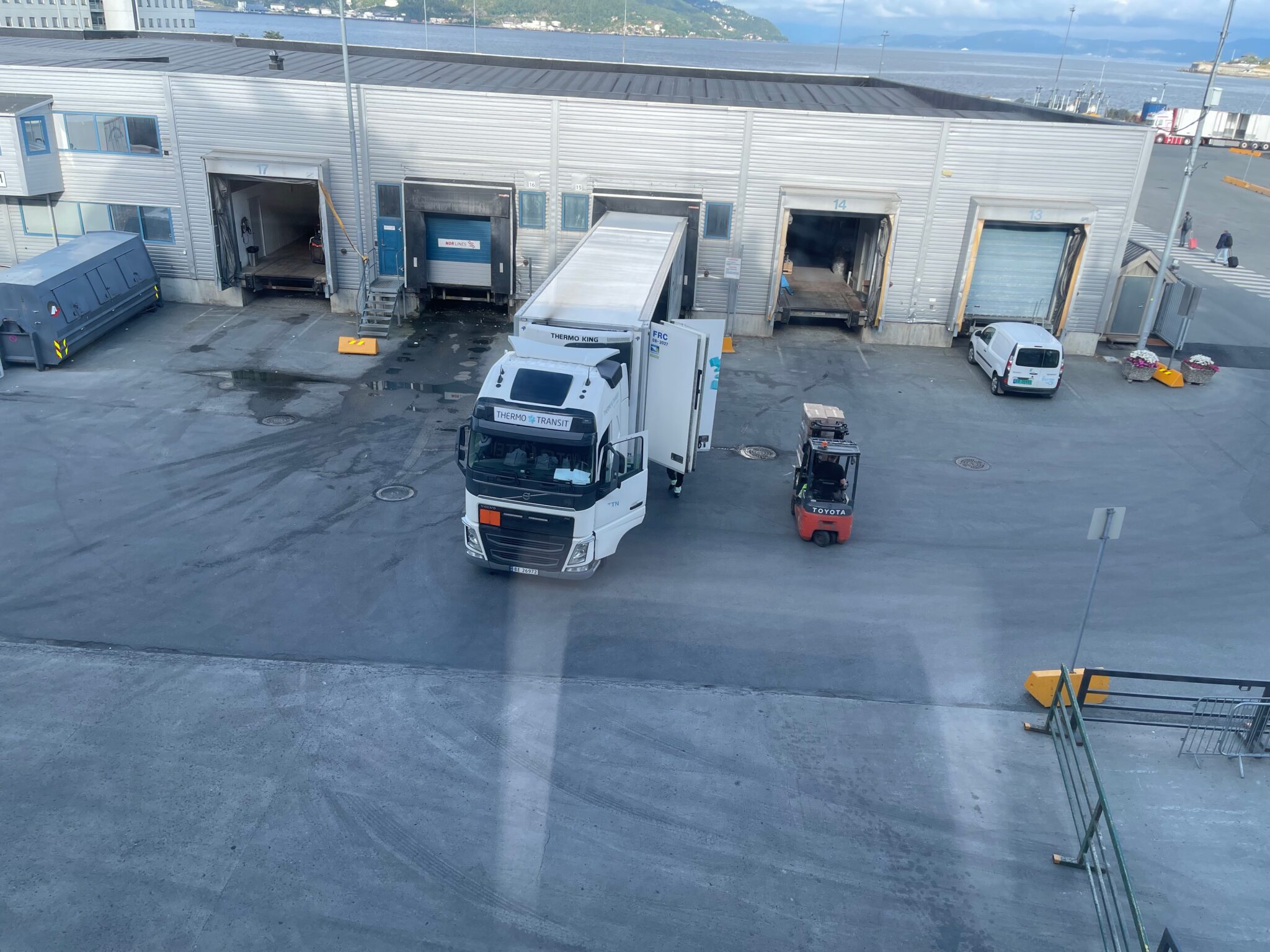
There’s no good way to make deliveries in the fjords except by water. It’s mostly small goods, cases of packaged food or paper items, for example. But they can fill emotional needs as well. Claudia, our table mate, described seeing a shrouded body being unloaded from a hearse and brought on board. Clearly a family was having a loved one delivered from a place of death to a place of burial, a final voyage in this fjord-riven terrain.
Another part of the economy we saw from the boat was salmon farms, their underwater cages marked by colored markings on the surface and floating feeding stations.
On Tuesday afternoon near Svolvaer, in the Lofoten Islands, we boarded a smaller boat to go on a “sea eagle safari.” Both boats were moving through open water when we climbed across a narrow gangplank from one to the other, but in moments we and our safari-mates were clustered ahead of the cabin in the small boat.
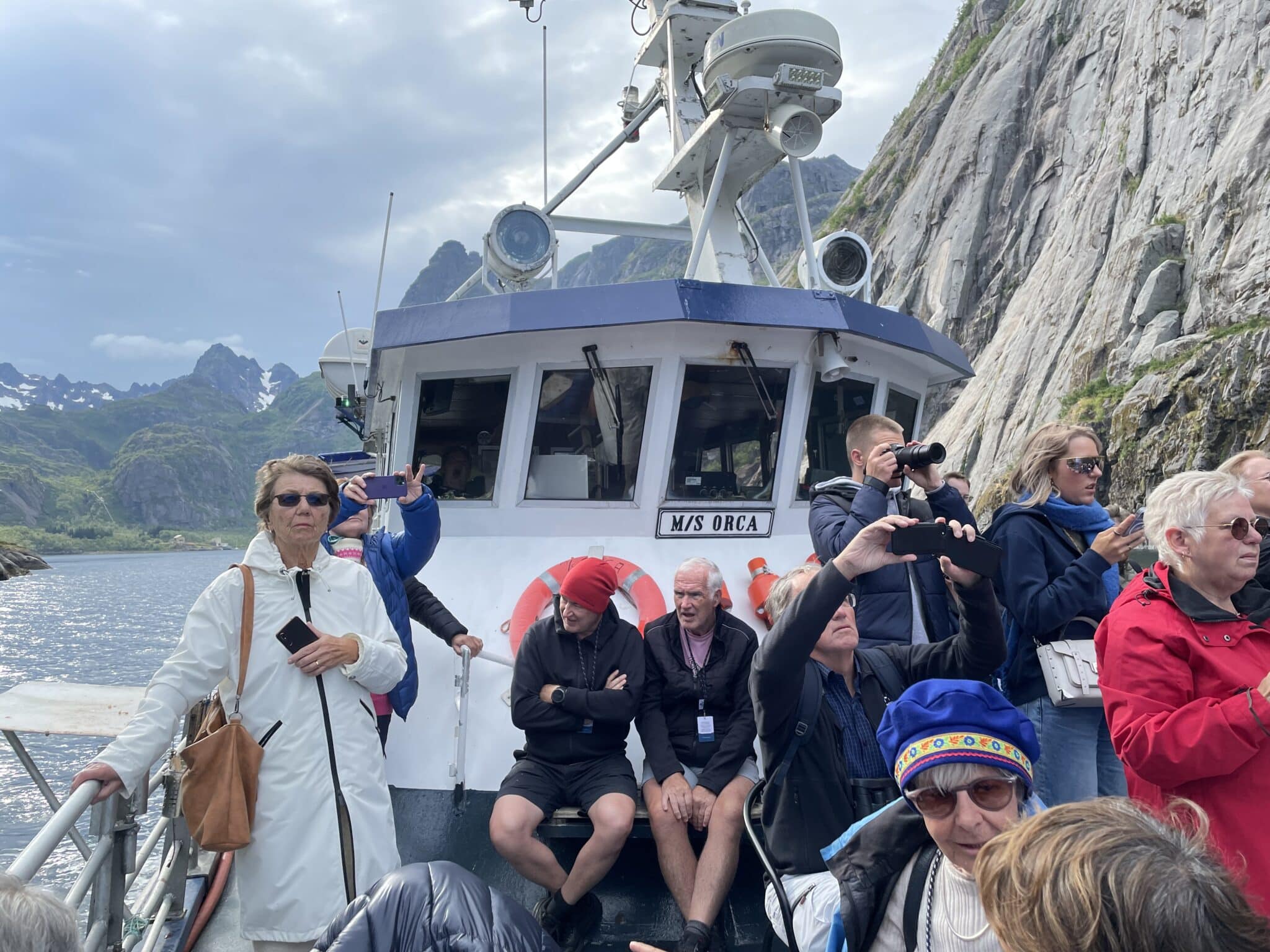
The Lofoten Islands are one of the special places in the the firmament of the fjords. Granite mountains rise from the sea even more dramatically than we had seen earlier.
They frame narrow channels, and the Castor transfers to battery power to prevent engine noise disturbing the stillness of the waterway.
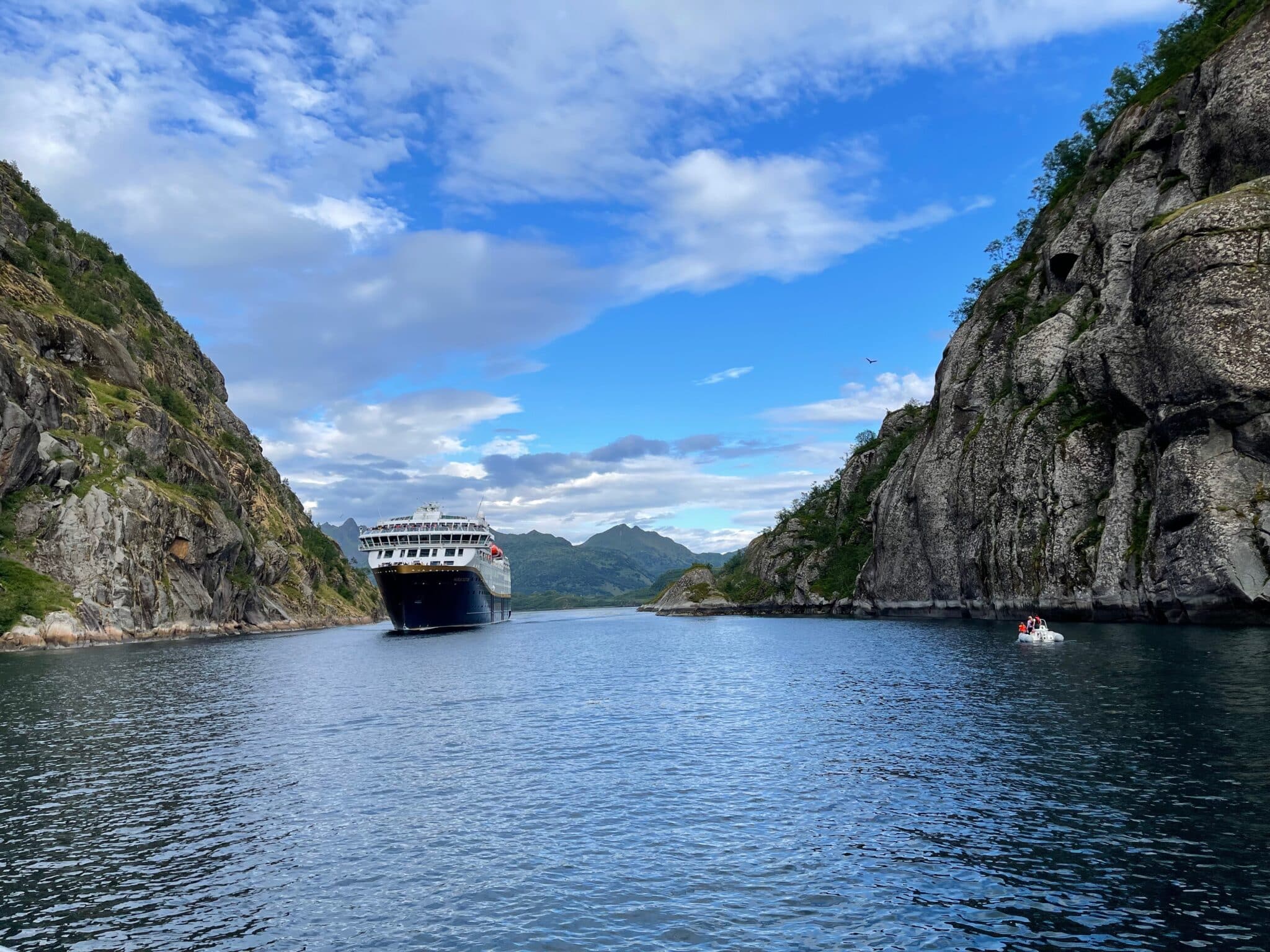
On our little boat, named Orca, we got a closeup look at the beaches and small farms that dot the islands that frame the channels and fjords.
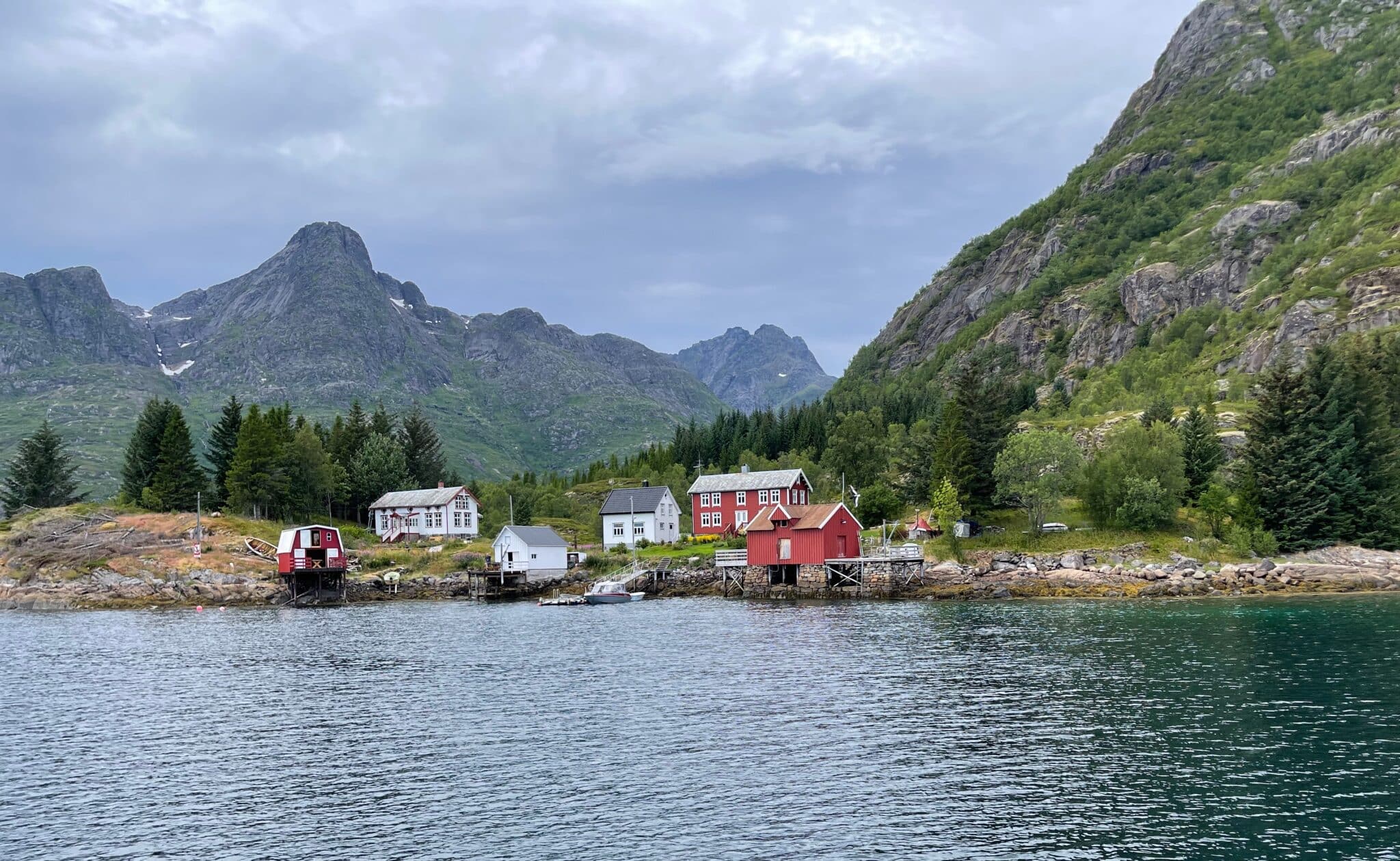
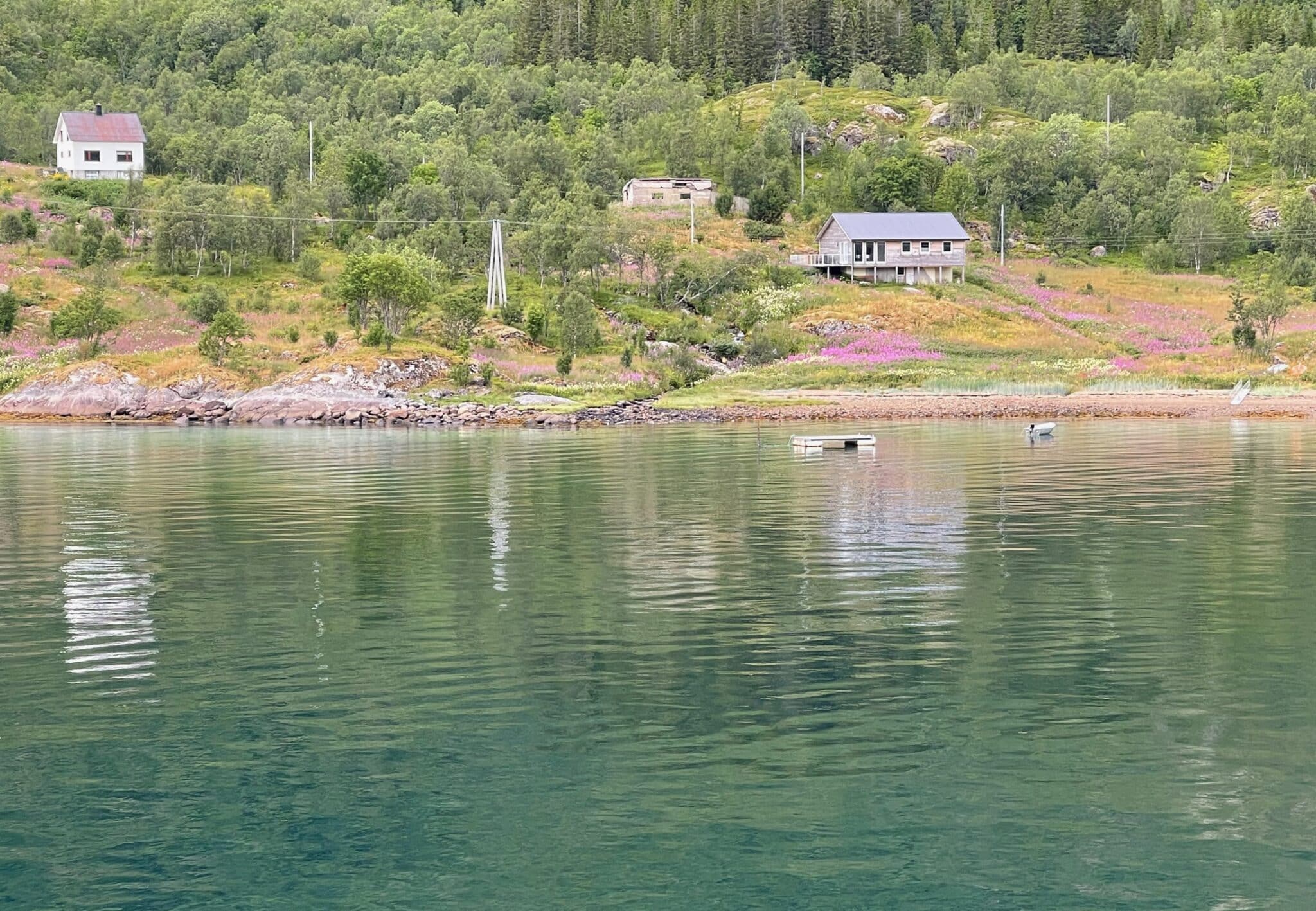
Our safari’s mission was observing the raptors that circle to find prey and then dive and skim the surface to snatch up fish with their claws.
Sea gulls, far less elegant, were far more plentiful. They saw us coming and they knew to expect a gift of fish from a red-headed deckhand, clearly a Viking descendant.
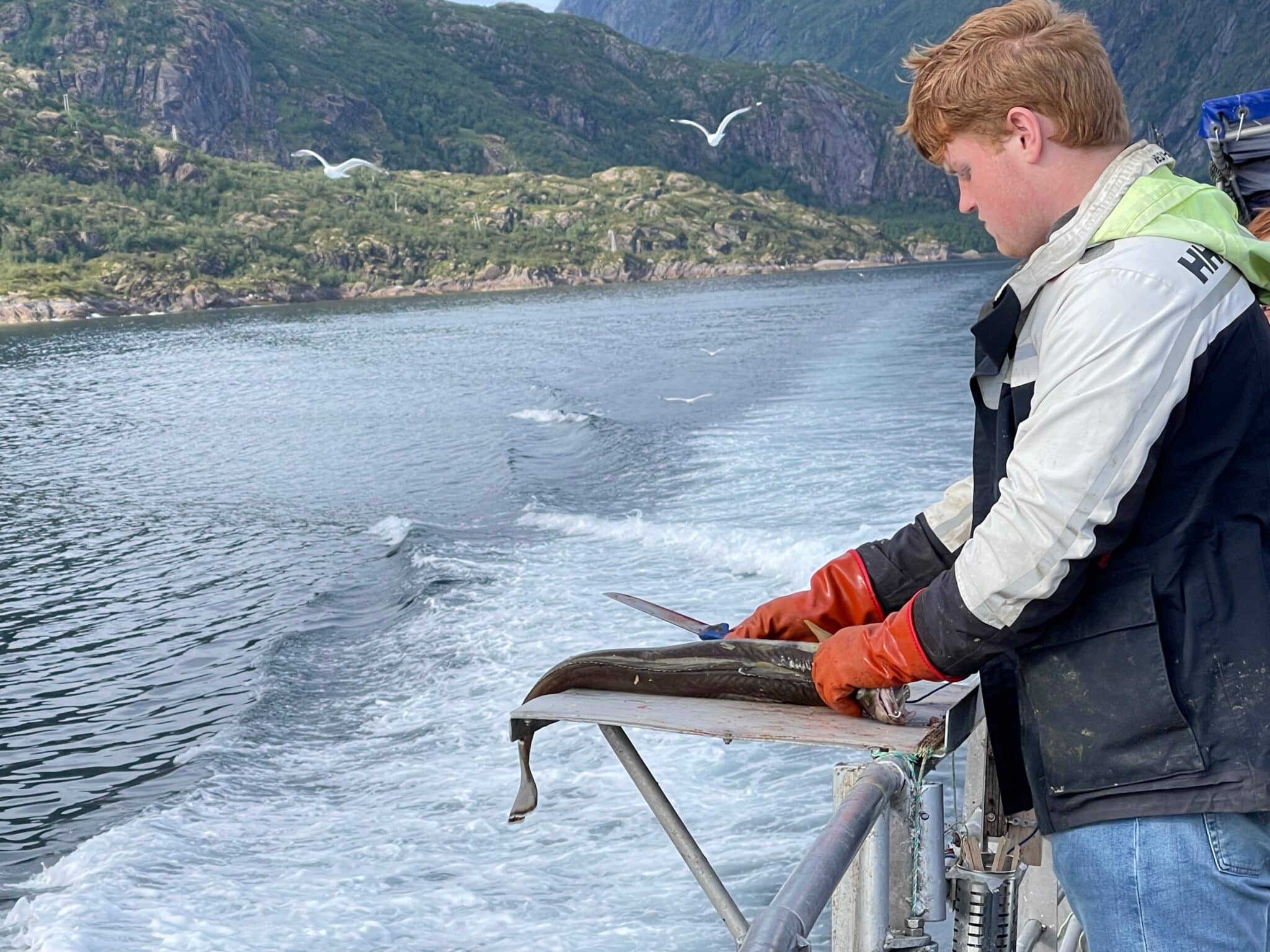
They flew alongside, swooping in to stab at the fish corpse he held, and even perched on his head from time to time. There were so many seagulls, it was hard to believe it was a sea eagle safari.
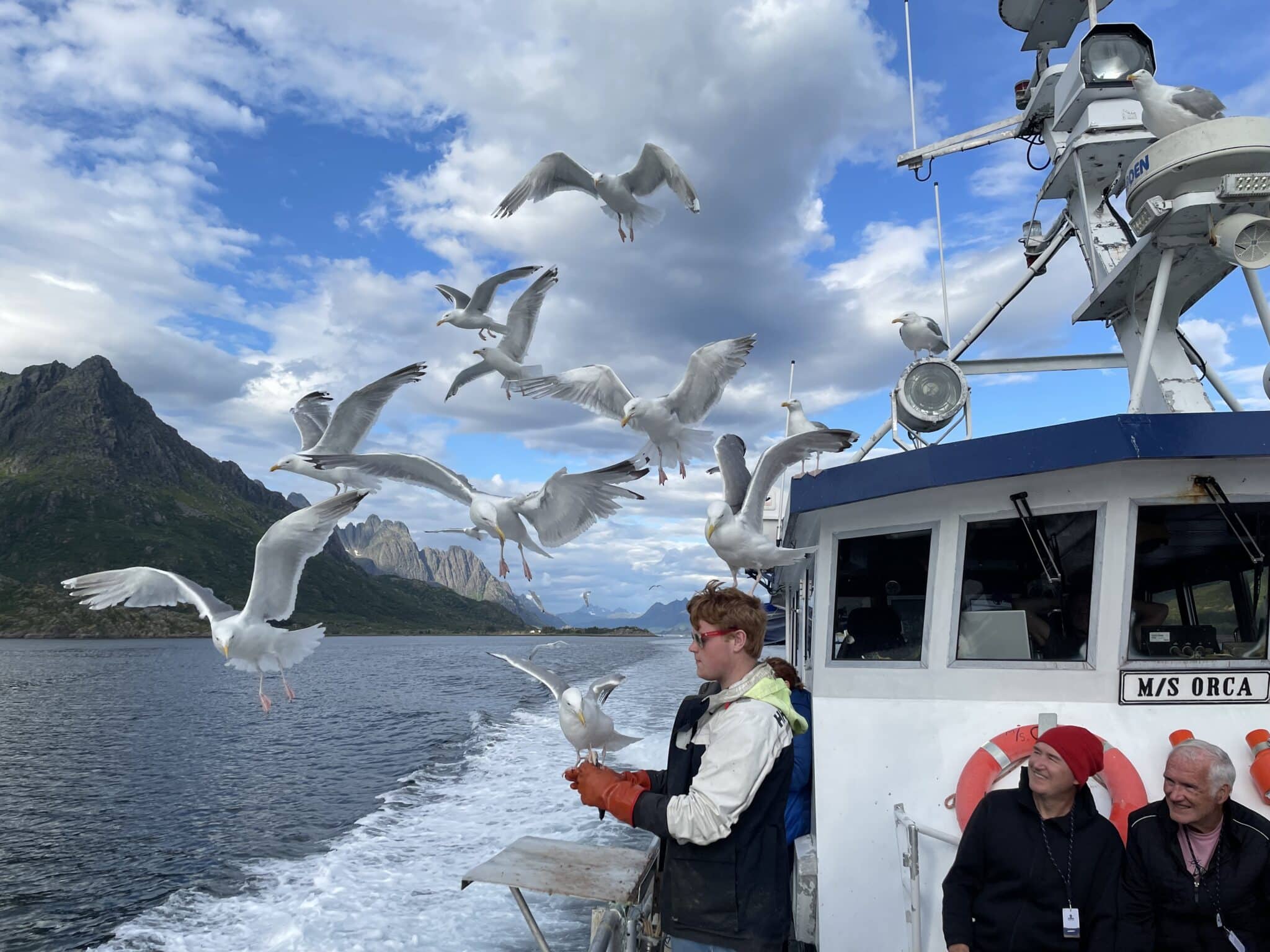
We must have covered several miles. The captain and crew chased eagles they couldn’t see but knew were there. The gulls flew with the moving boat and cried and ate and chased fish scraps and balanced on the deckhand’s head. When we stopped to tempt the eagles, eight or ten times, they moved faster than most of us could photograph.
Then Kristin, one of our boat mates, cried, “Look!” and pointed to the sky. We saw the serrated wingtips of an eagle banking and circling, almost lost against the rays of the bright sun.
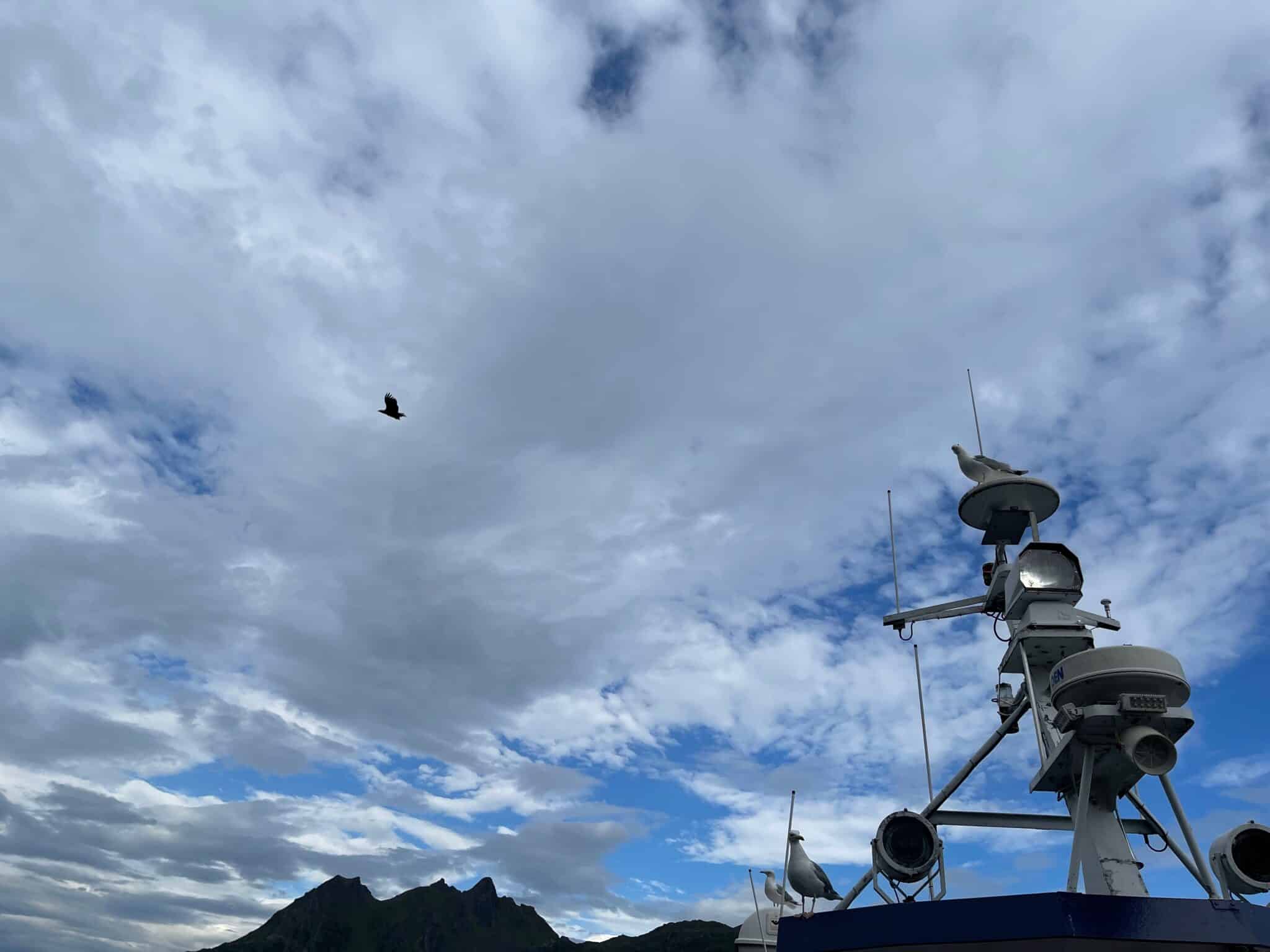
The sea eagles were also conditioned to expect a treat, which the deckhand signaled by lifting his arms rapidly several times. Then he threw a whole dead fish to one side of the boat and we all craned our necks and held up our cameras and cell phones.
The small boat motored into a fjord with blue green water surrounded by granite walls. The captain edged the boat close to the rocks where a few troll dolls stood watch. We were, after all, in Trollfjord.
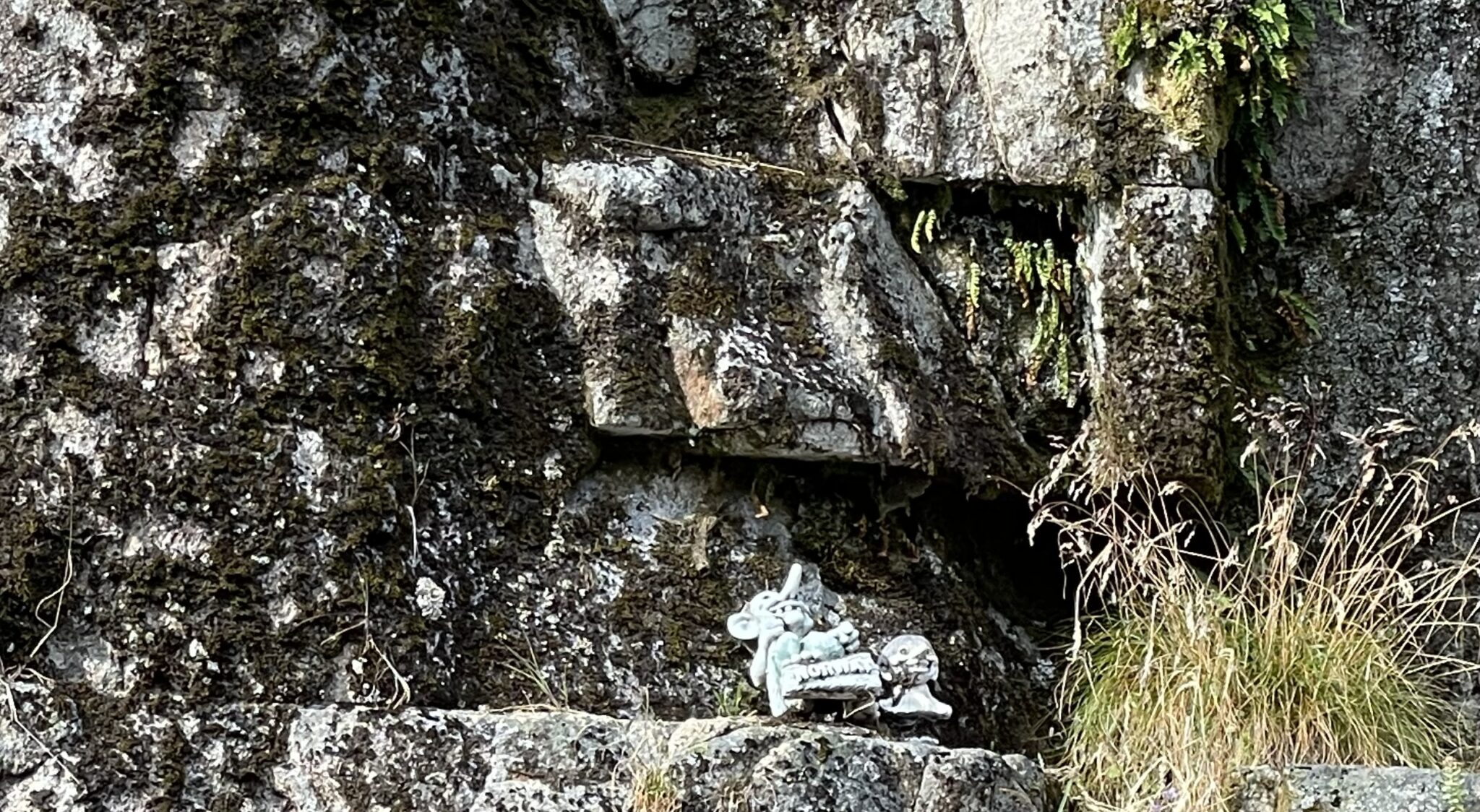
Narrow waterfalls cascaded down the side of the sheer granite cliff into the turquoise fjord.
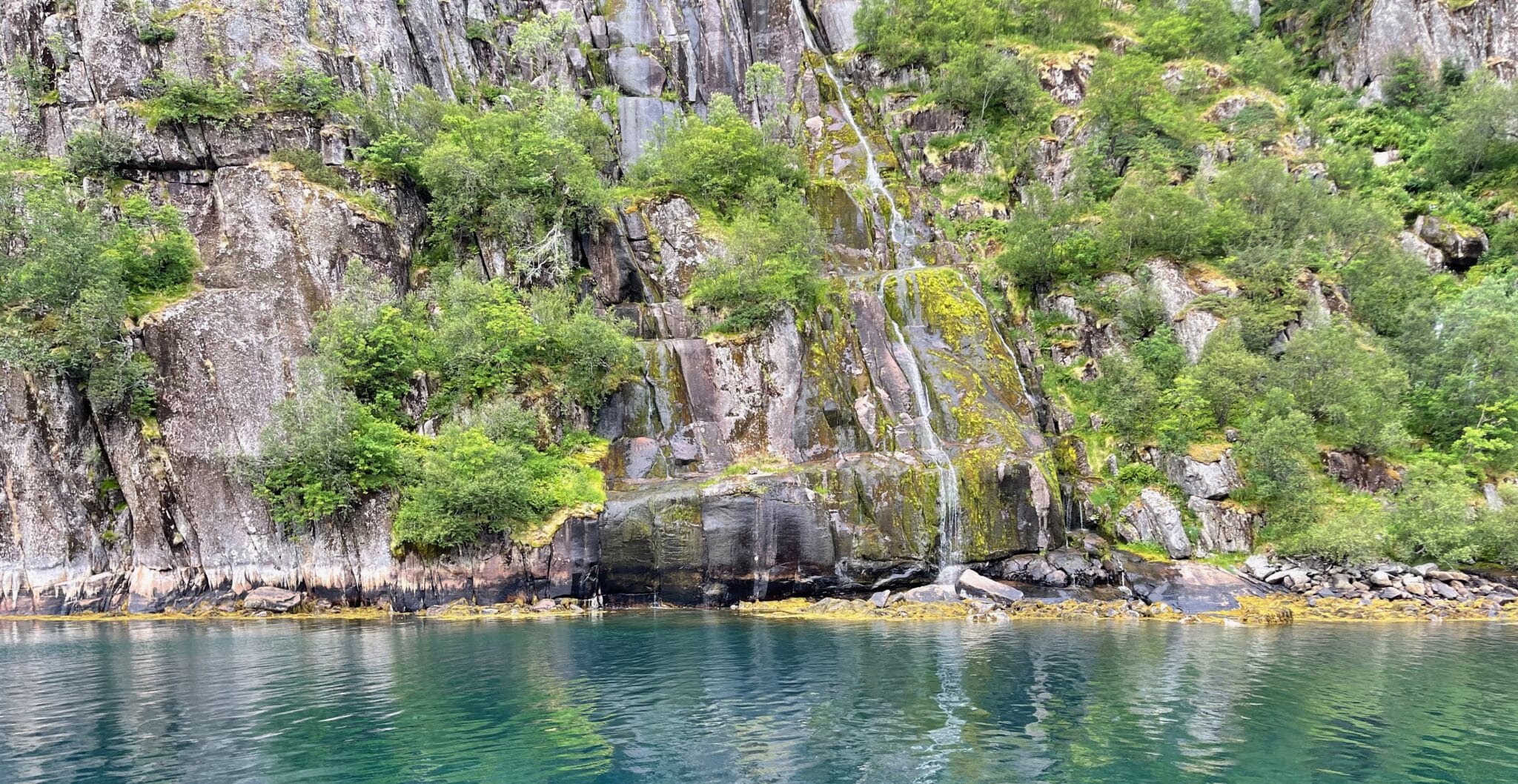
Then we motored back to open sea, past a tiny settlement where Vikings once lived, and into the harbor at Svolvaer. A statue greeted us. It was The Fisherman’s Wife, created by Per Eng and erected in 1999 to memorialize the town’s fishermen who over the years had gone to sea and not returned.
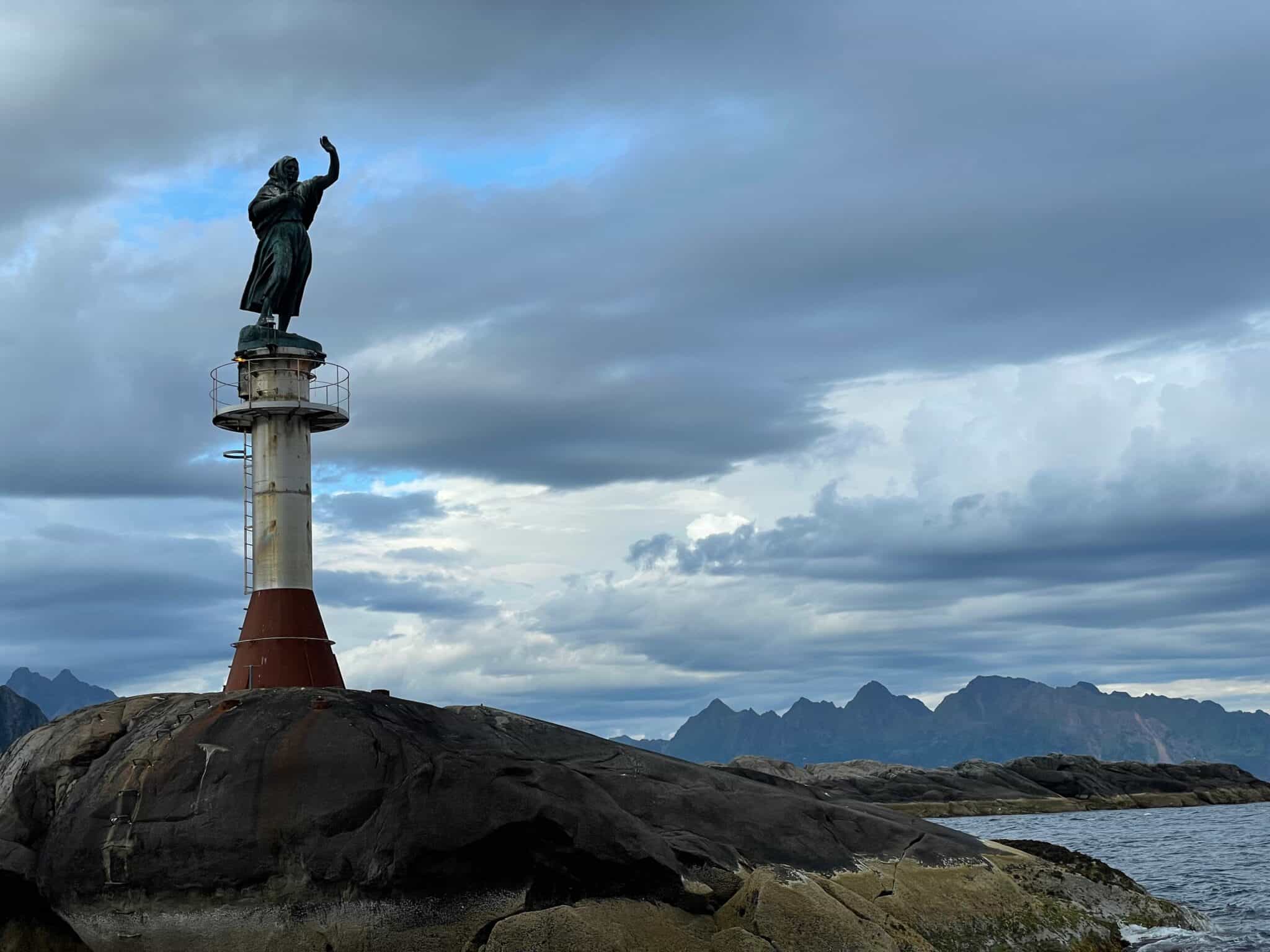
When we were back aboard the Castor, Svolvaer gave us a stubby rainbow to remember it by. We felt giddy with the experience of being close to the water with wind in our faces, sea eagles soaring and seagulls behaving like the gulls you know on any continent, and a rainbow to top it all off.
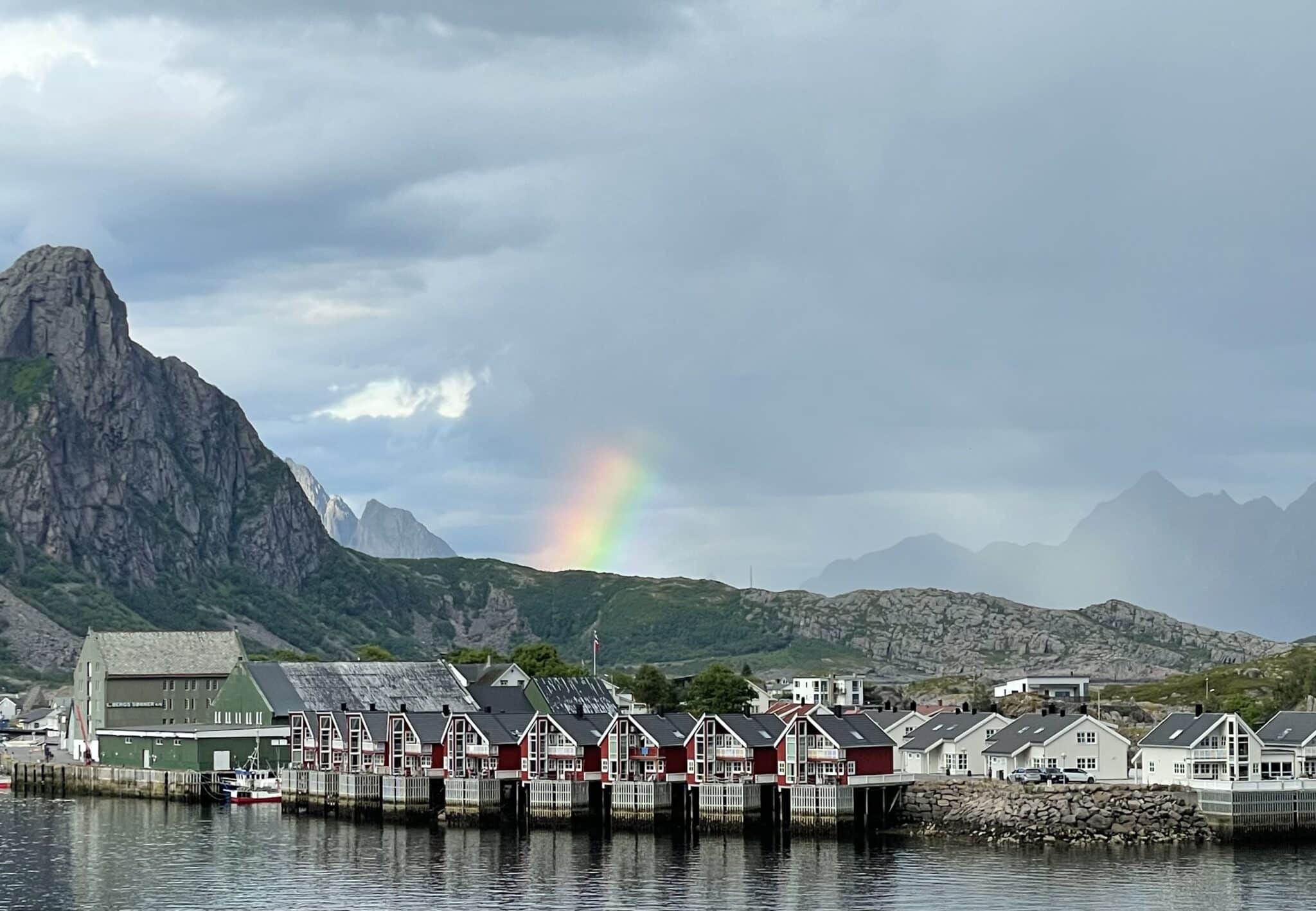
As the Castor moved south, the landscape had eased from sheer rock to sheer rock with tufts of green. We saw more houses outside of towns, and the towns got bigger.
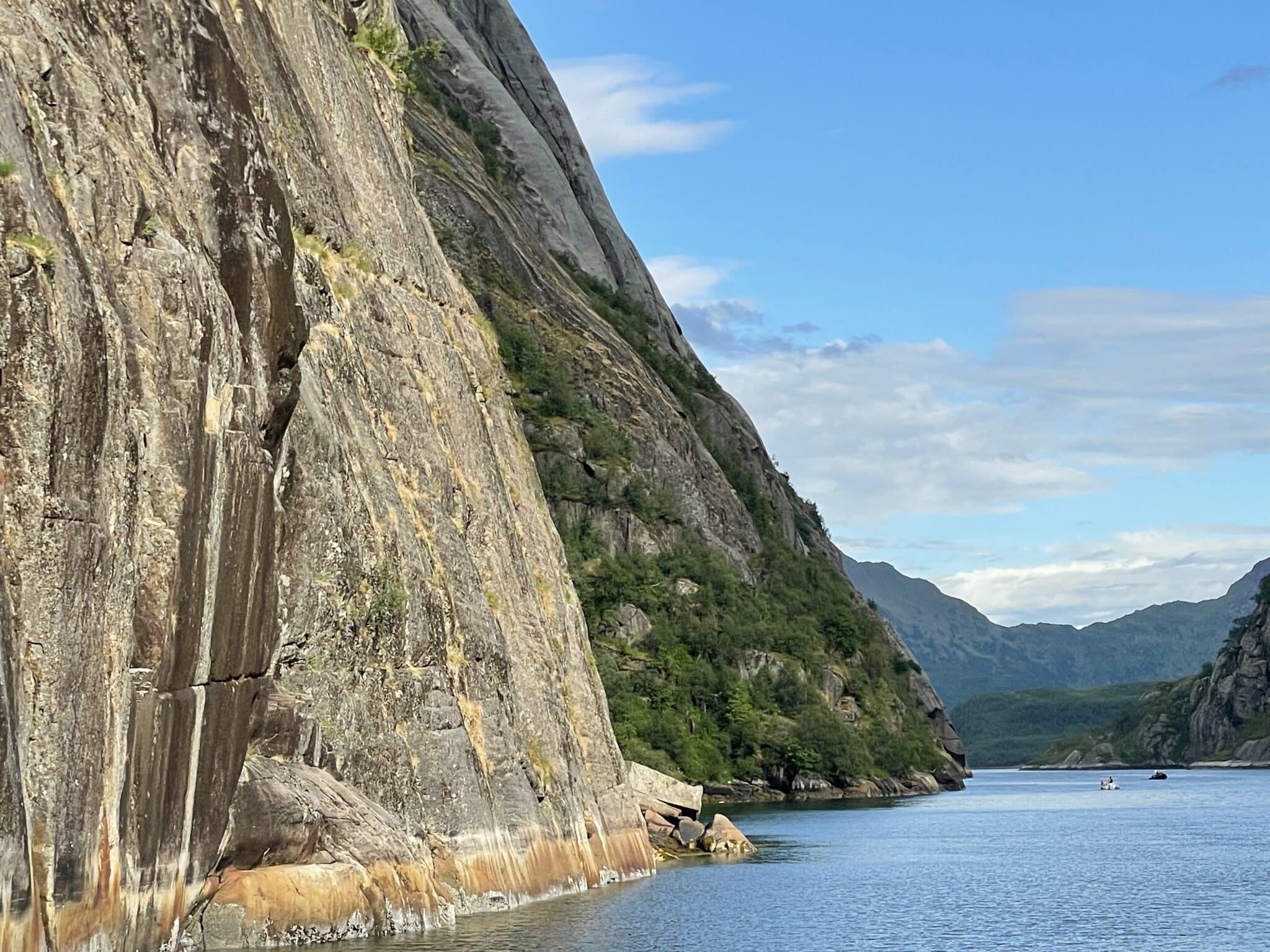
For all of that, Norway is less densely populated than every other European country except Iceland. Not quite 5.5 million people live in not quite 150,000 square miles, or about 35 people per square mile.
Early Wednesday morning we stopped at Ørnes, around 50 kilometers above the Arctic Circle near Jetvik.
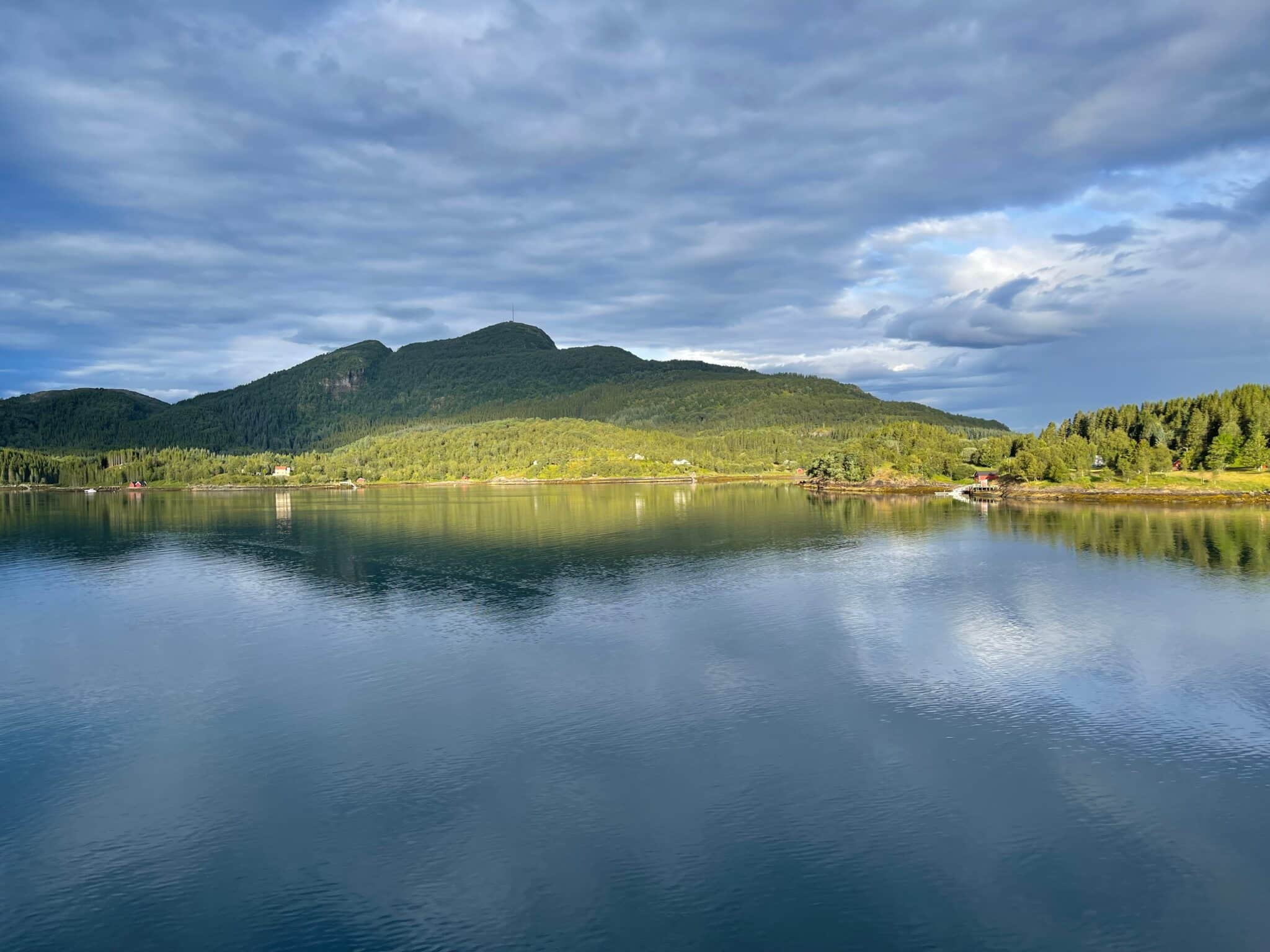
We were eating breakfast at 8:45 when the ship announced we were near the Circle and we dashed to an observation deck on the ship’s port side to take pictures of the marker there.
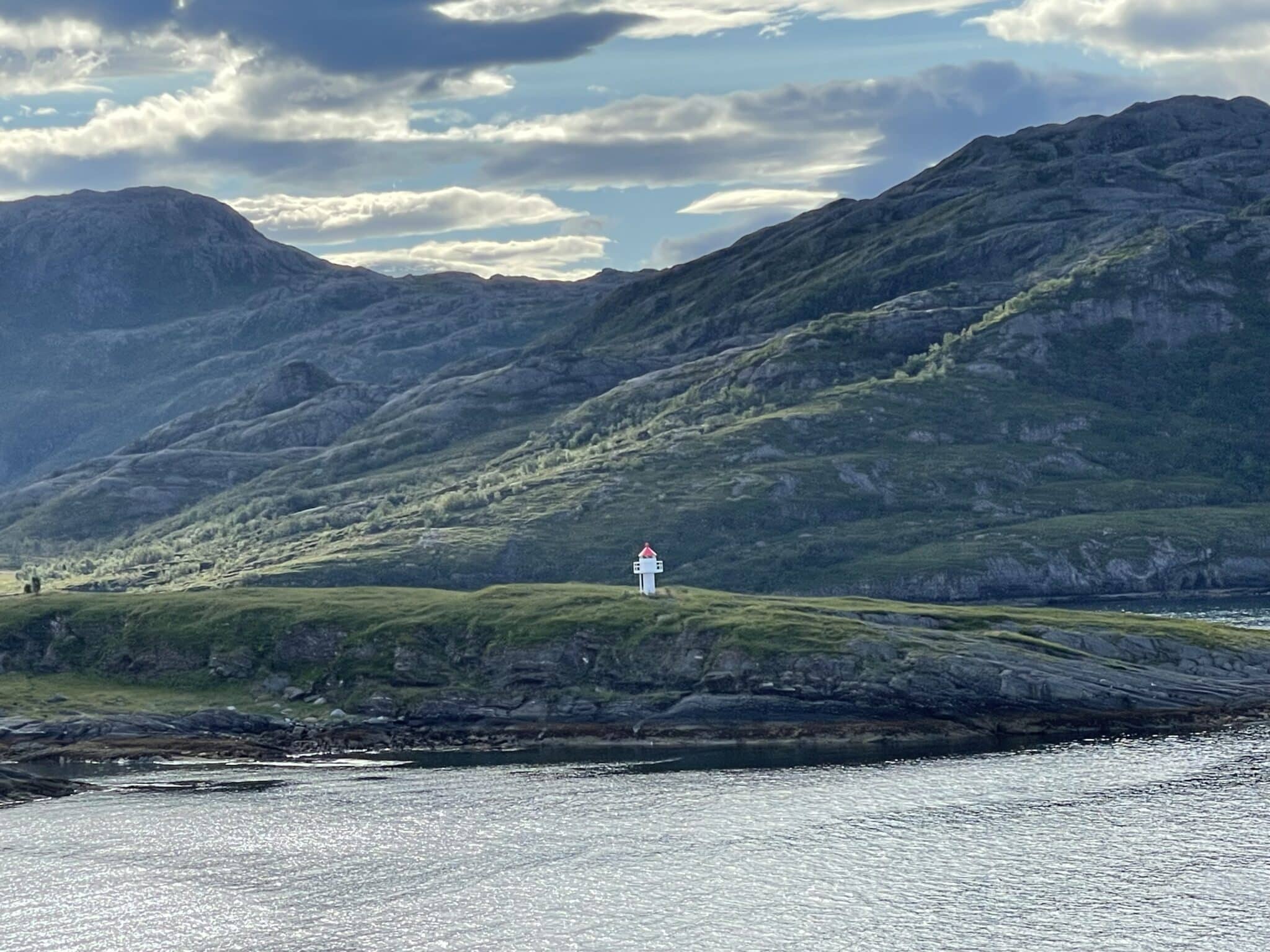
Later that day, there was another planned excursion on another fjord. Near Brønnøysund there’s a mountain with a hole in it that is actually a natural tunnel. It’s called Torghatten, which translates as the square hat.
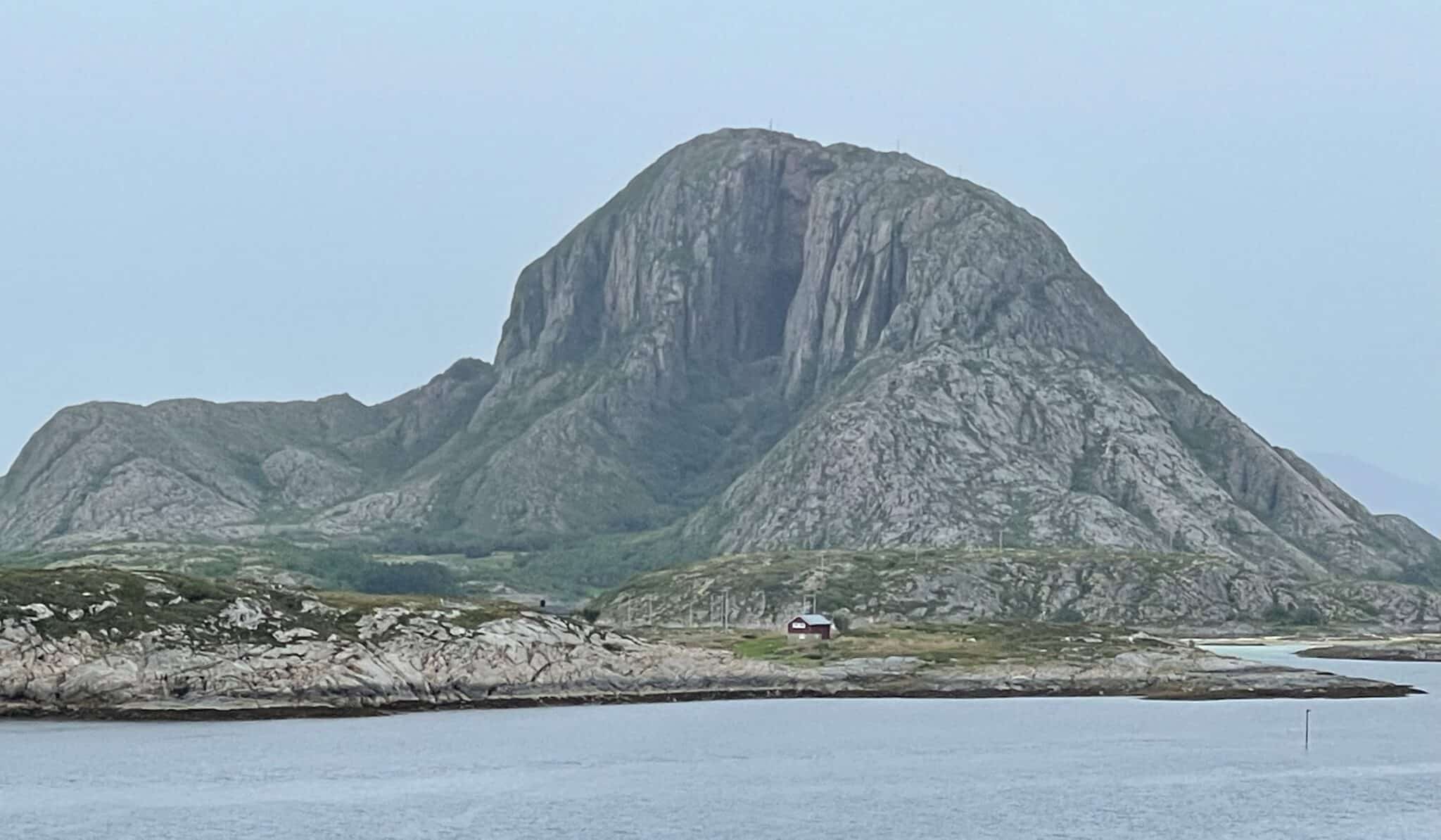
Barbara joined a group that planned to climb up to the top. A bus took the hikers through the town and over a bridge to Torget island where the granite dome Torghatten rises above the sea.
The walk started on a path at the head of a fjord and wound around the mountain like a thread. They crossed a farm and reached a set of 450 stone steps that led to the top.
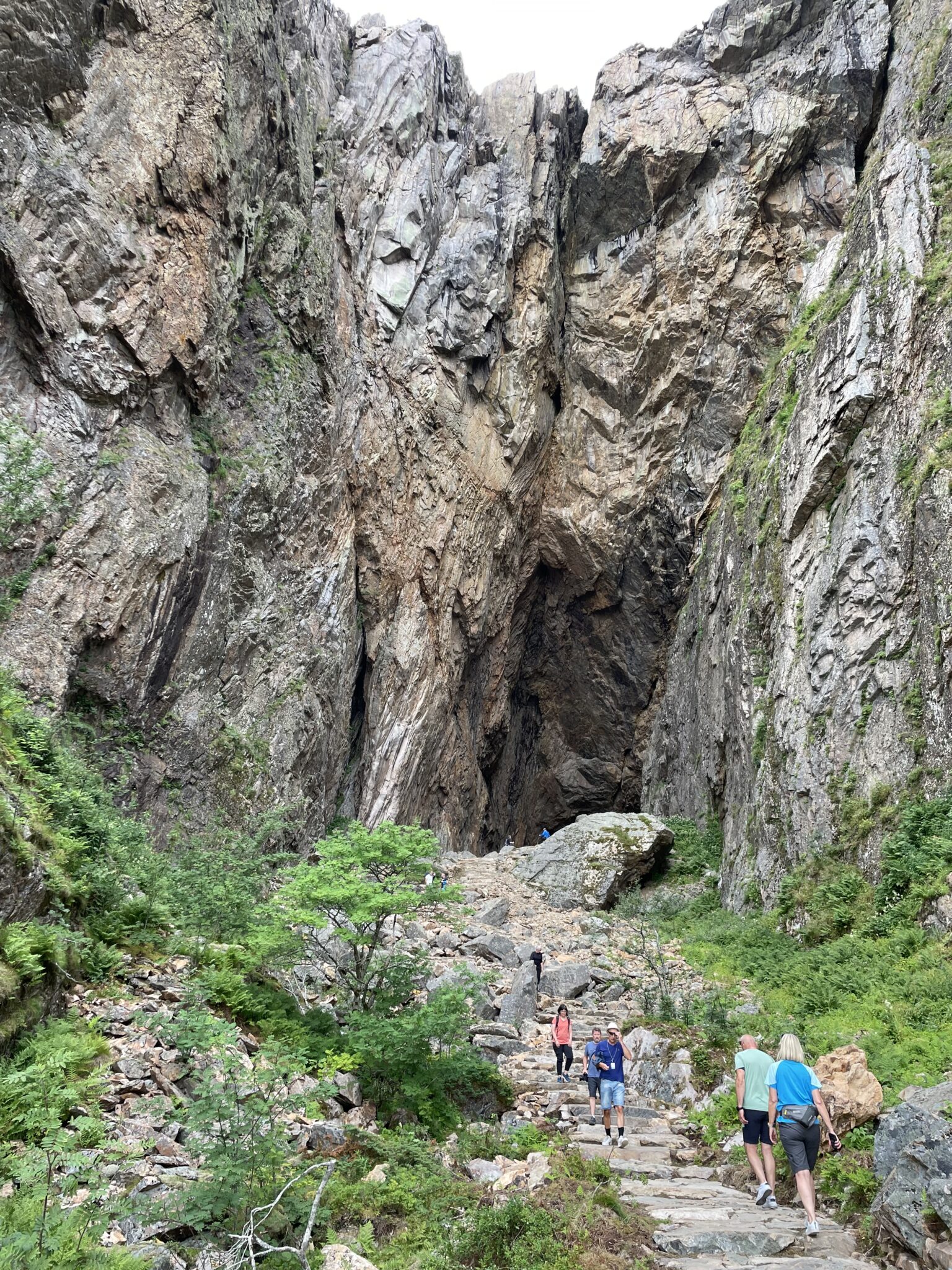
Barbara began the climb grateful for a set of poles that the guide had given her. When she paused on a resting ledge and the rest of the group passed her, she laughed out loud. She remembered that she’d lost 10 percent of one lung to 9/11 cancer and she had just passed another big birthday. But she kept climbing.
Albert, the guide, originally from Germany, pointed out slashes on the side of the mountain. “You see the arrow marks there?’ he asked.
Here was the legend that explains the hole. A troll named Hertmannen chased a beautiful woman called Lekamoya up the mountain. When he realized he couldn’t catch her, he shot an arrow to kill her. But the troll king Somna tossed his hat in front of the arrow, and the hat turned into the mountain with a hole in the crown.
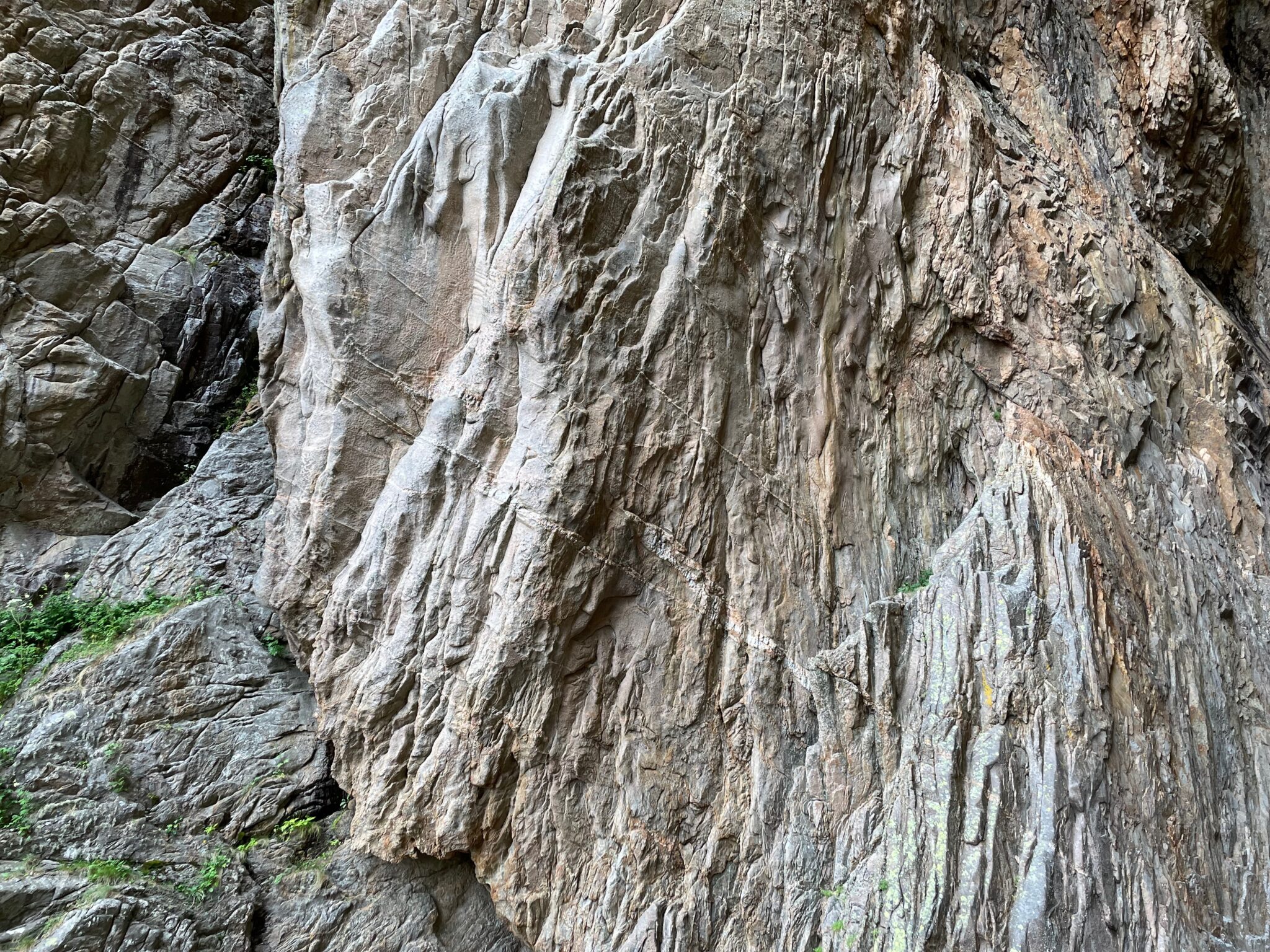
At the top Barbara decided she could declare victory without climbing down another set of steps into the hole. Someone handed her a Norwegian flag, which seemed like an appropriate trophy.
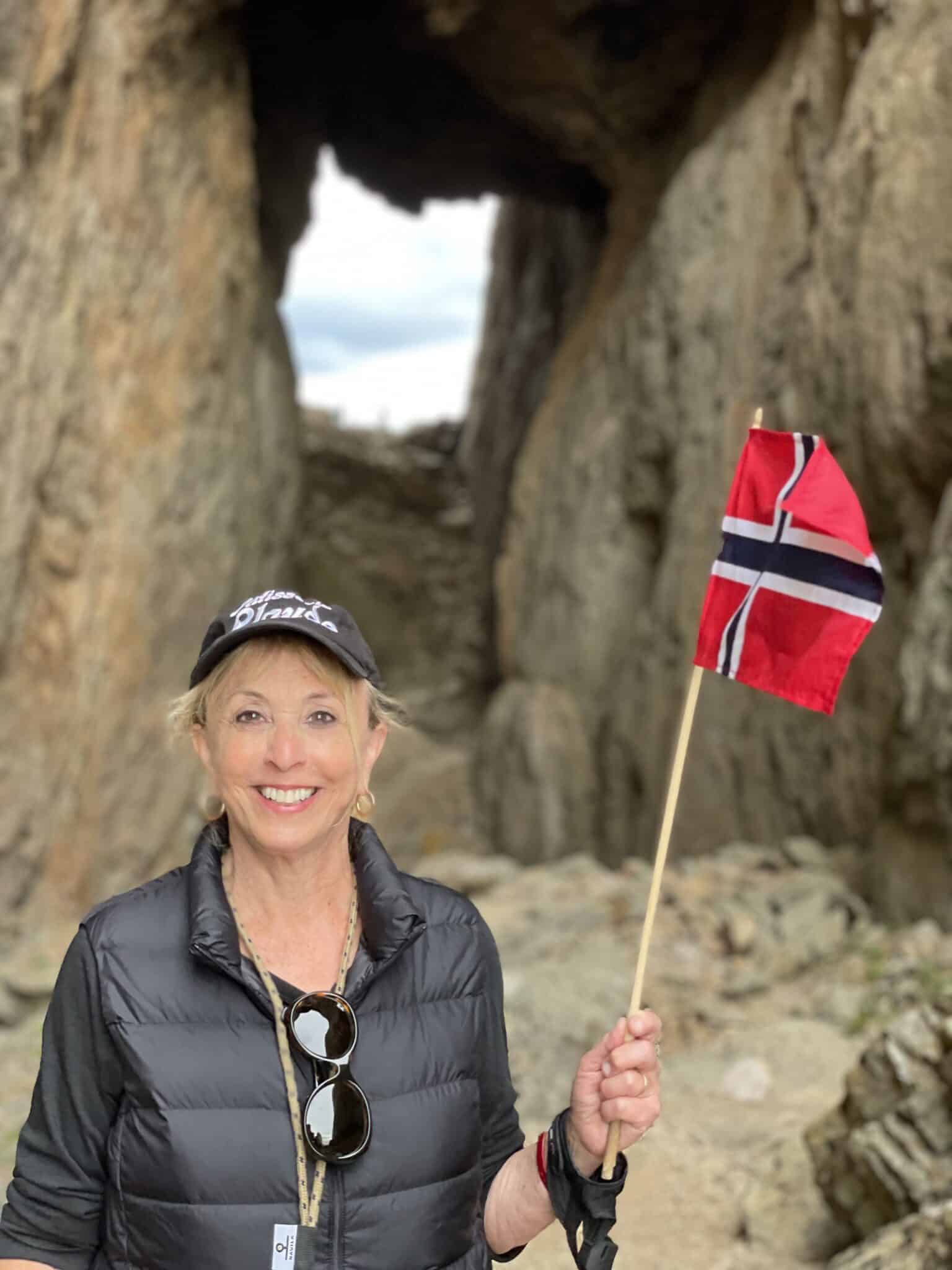
Barbara and Albert were the last two down the mountain and the group rejoined the boat in time for the Castor to continue south. That night was our first below the Arctic Circle since we’d joined the boat, and the first night we’d seen a sunset. It was suitably spectacular goodbye to the Land of the Midnight Sun.
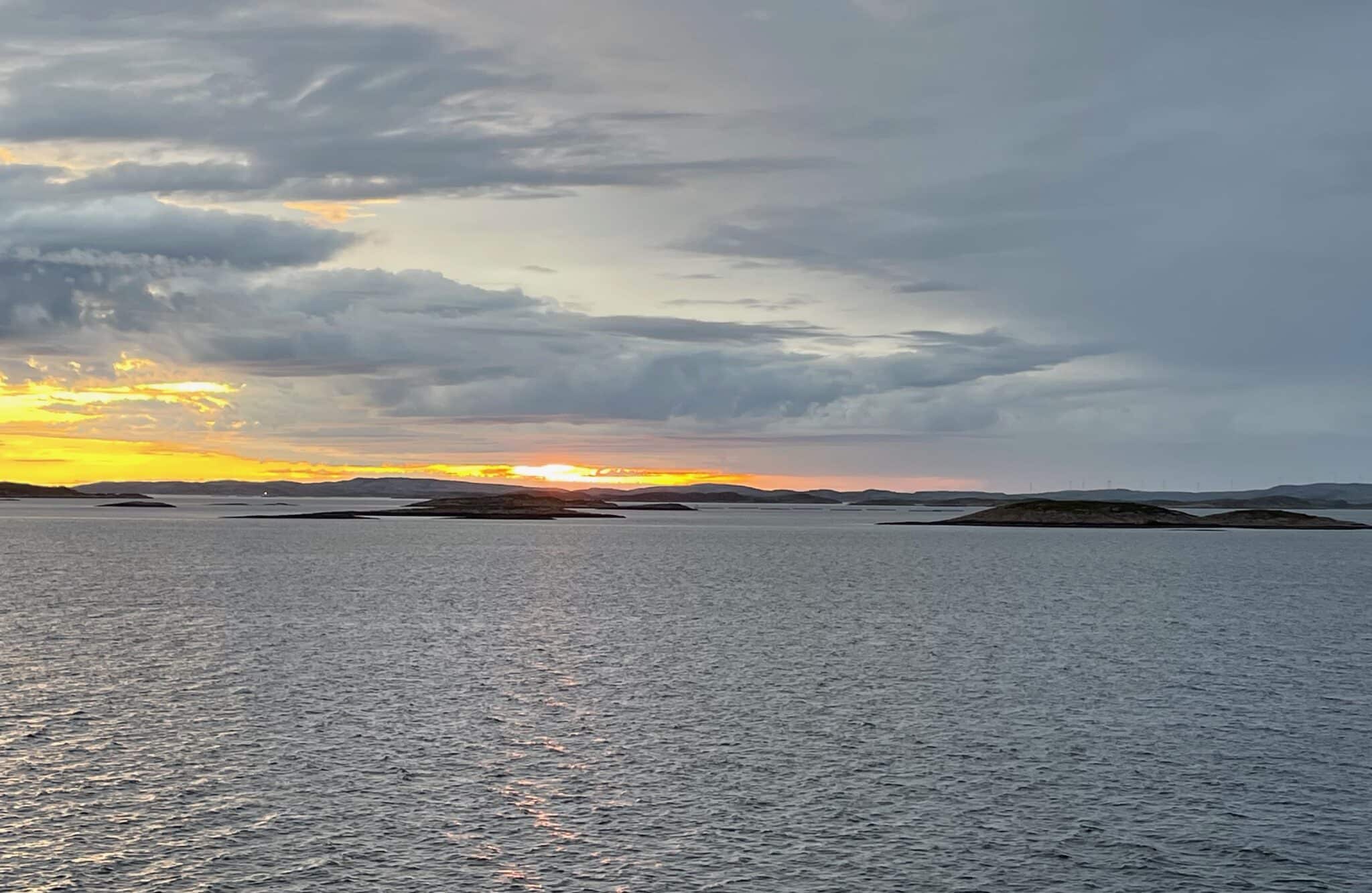
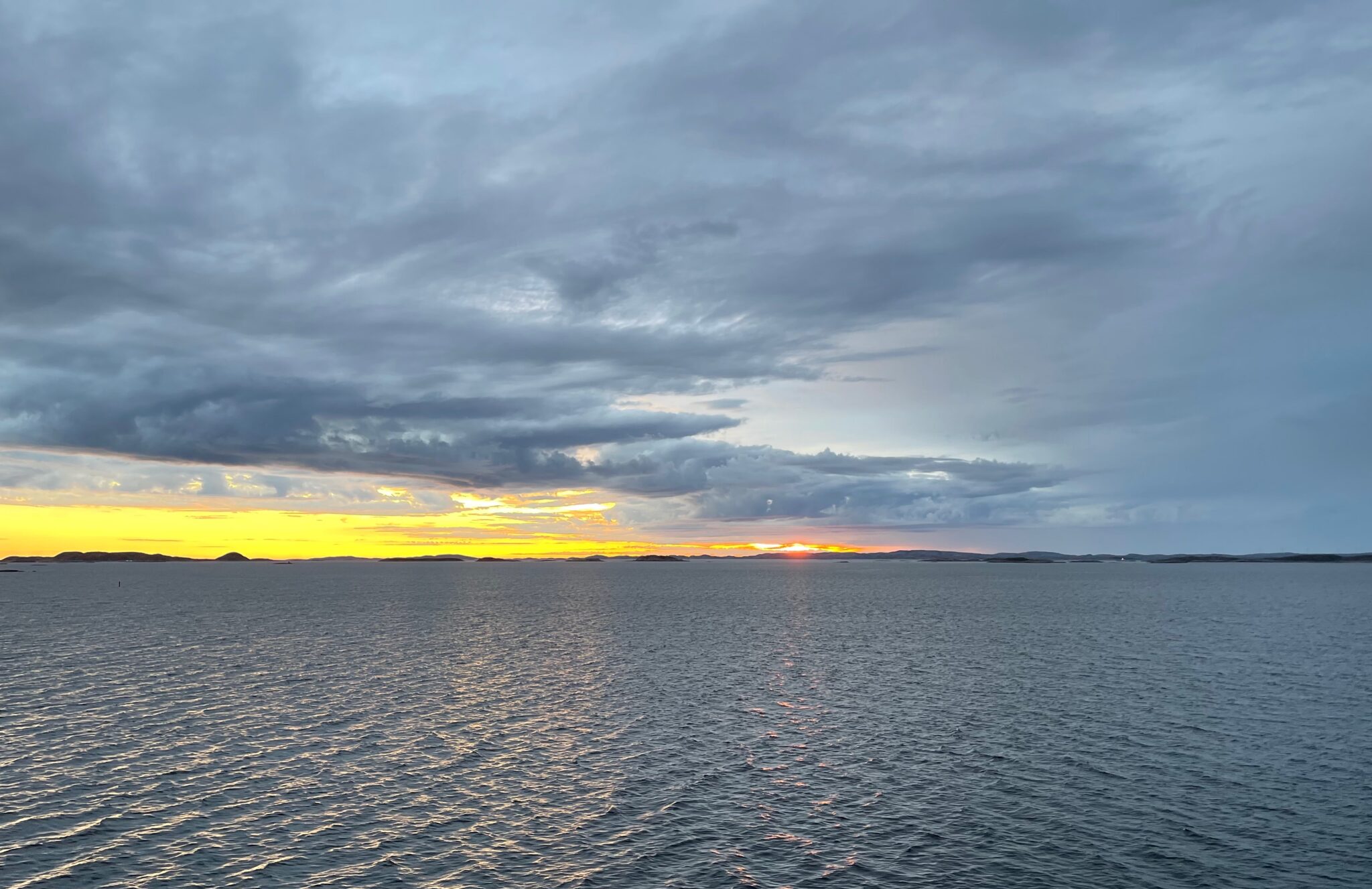
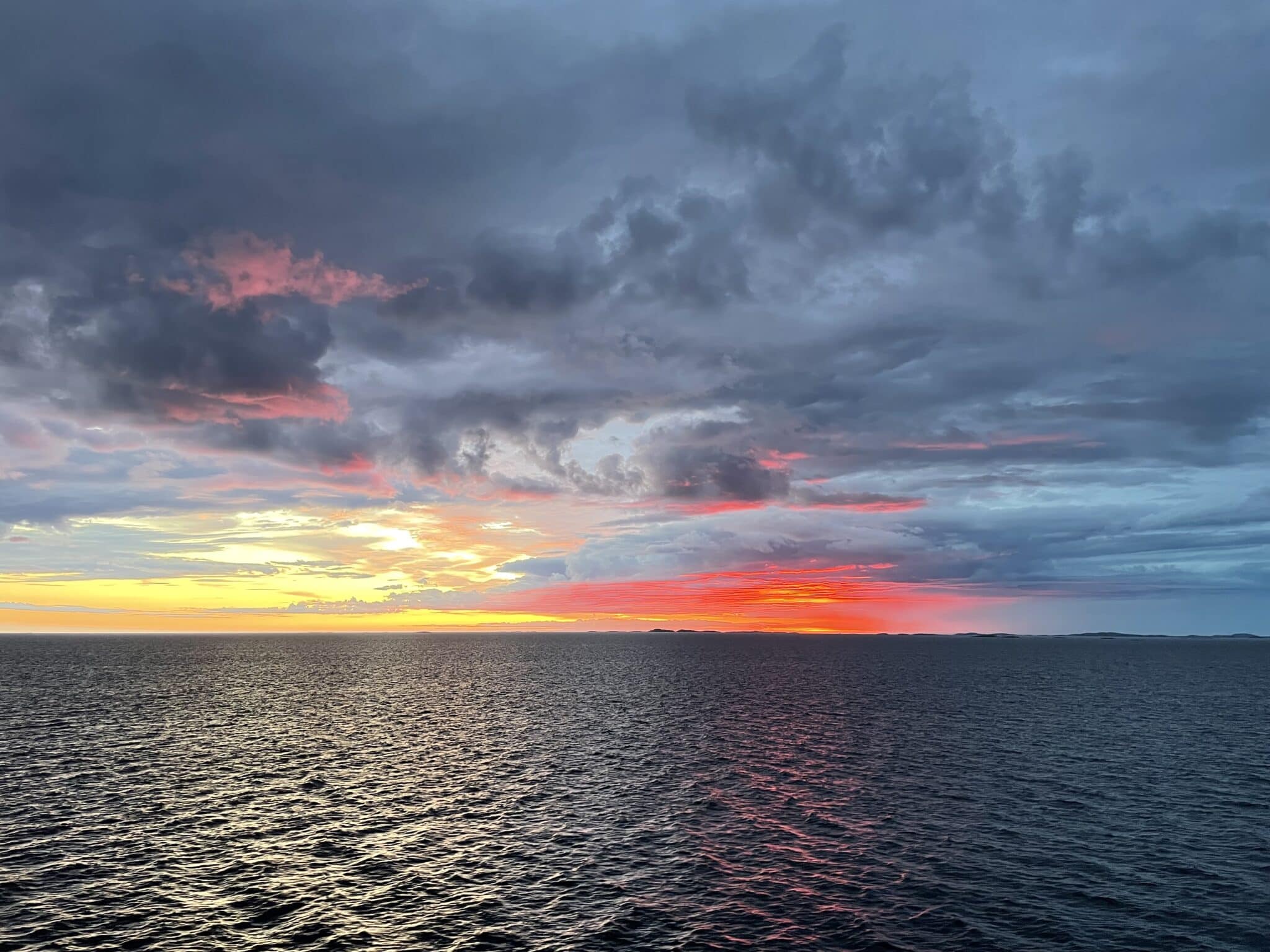
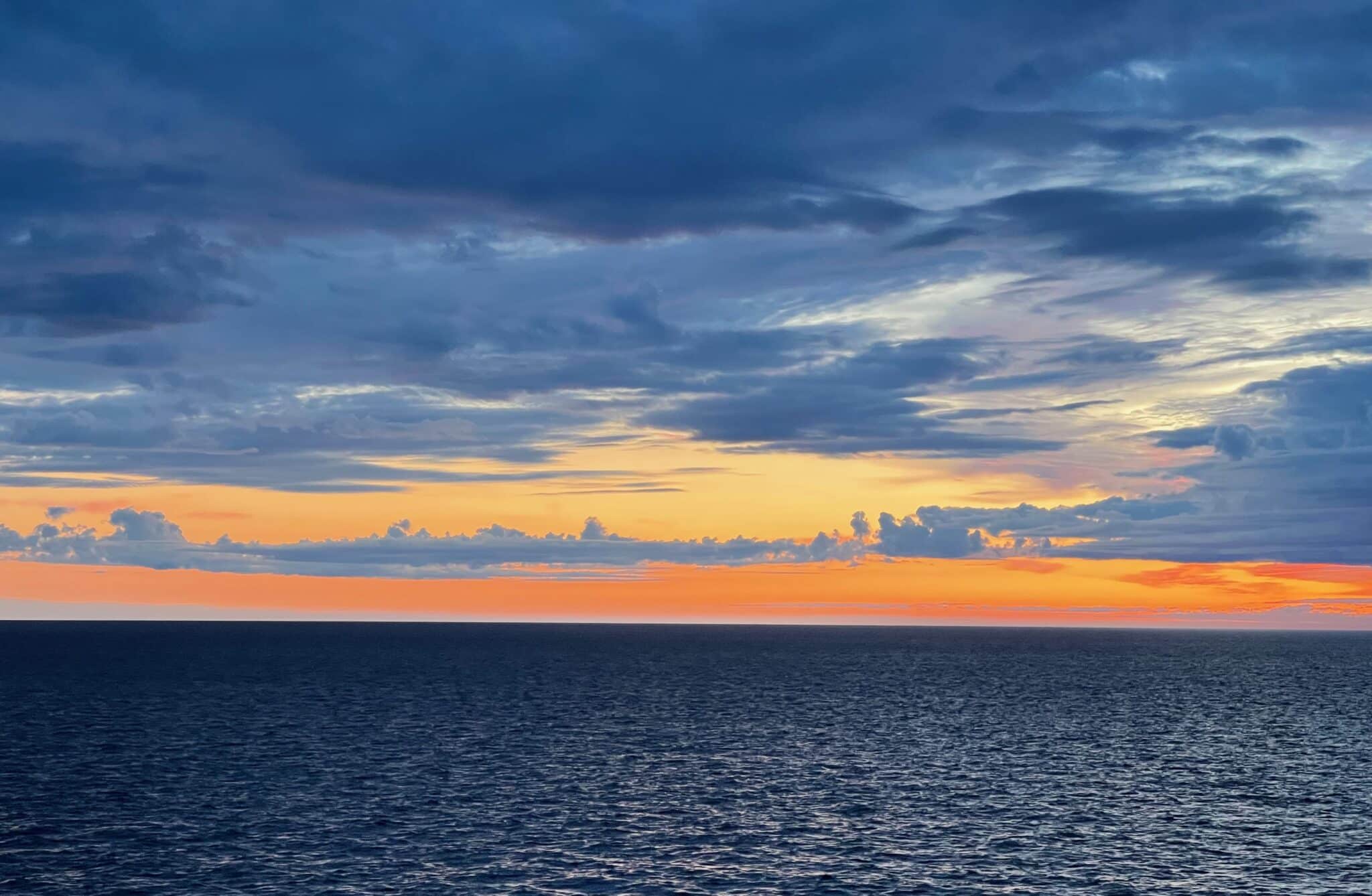
The Castor motored through the night and docked at Trondheim at 6:30 in the morning, August 3. That was our last stop.
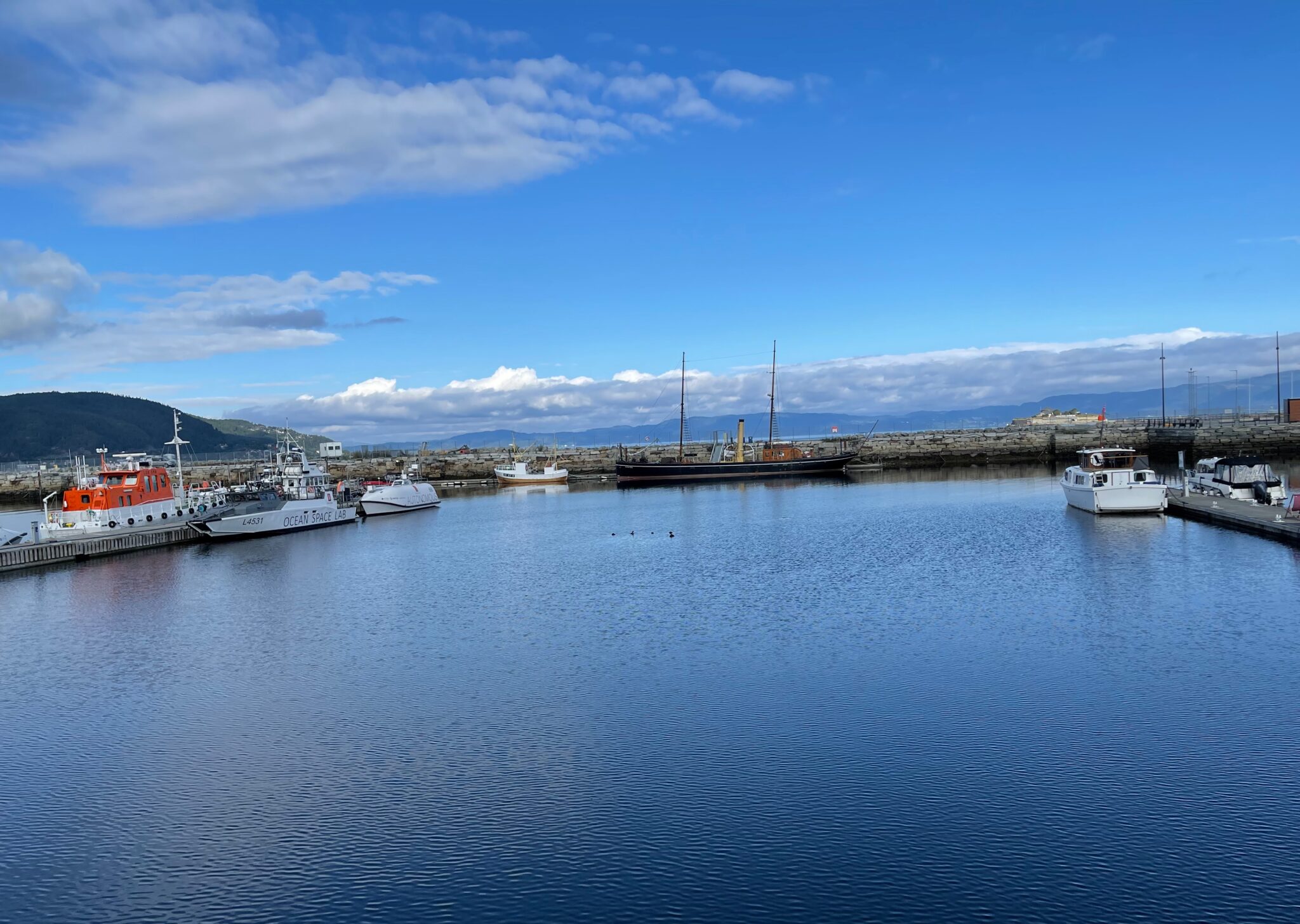
We ate breakfast and reluctantly said goodbye to our new friends and to the Castor’s fine food and accommodations and helpful, friendly staff. They all reminded us that, post-COVID, there’s still a world to be discovered and embraced. Trondheim, on the land, and more stops in Scandinavia would be our next discoveries.
